News
Since 2012 the North-West University (NWU) in South Africa has been competing in solar car challenges. The NWU solar car project stands out as a symbol of engineering excellence in the pursuit of energy efficient transport technology. This flagship inter-disciplinary project of the Faculty of Engineering at NWU, not only focuses on research and the application of new technologies in renewable energy, but also aims at inspiring communities and prospective students to engage with renewable technology.
It is is an example to other universities, of what kind of projects students can get involved with that will teach them how to practically apply their skillsets to a project that could change the world.
Dear Colleagues
As you bump (race?) up the ladder of an organization, keeping a journal can be really useful. No, I am not referring to making an accounting journal entry but a ‘diary entry’ as we in the Commonwealth English speaking world often refer to it. Or in shipping parlance, sometimes referred to as the ‘captain’s log’.
Journals can be Really Useful
Journals are useful for two reasons, I believe: firstly, to cover yourself when there are disagreements about what really happened some time back – and secondly (more importantly) – to be able replay back events some time later where you can ponder why things turned out as they did. And perhaps to help drive improvements in what you do and to track how you are progressing towards your overall plan for the business or your career.
The best thinking comes from structured reflection using your journal as a tool to peruse what actually happened. Replaying events later is crucial to our learning about a particular experience.
Naturally, there is the hope that you are performing your work to the highest level of professionalism – and this will always be evidenced in your interesting and objective journal entries.
Writing a Journal
Five to ten minutes should be all that is required to enter what happened during the day in brief abbreviated English. When writing – try and put the perspective of the other parties in your day-to-day activities and ask the question “why’ repeatedly to identify why things turned as they did.
Try and look at the journal entry against what you were planning to do that day.
Journals should not only keep a record of what happened but also emotions and tense comments that were made at the time. In as objective and dispassionate way as possible.
Remember that writing up your journal as soon after the day is over is best as the memory slowly starts changing what you remember. And this is what is so great about a journal – when you look back a year later – you will be surprised at the contrast between what you remembered happened and your actual record of the event.
Always write a journal bearing in mind that someone unknown may read it later. It may be describing your meeting on the structural supports for a bridge which later collapsed. Your memory and details may be critical in a subsequent court case or legal dispute.
Why do we avoid making journals entries?
Engineering types tend to often avoid putting journal entries together as writing skills aren’t always a preferred activity. We also believe it can take a huge amount out of our day doing something we often believe is unproductive time. One is often hard pressed to justify the time. And, writing a journal on a particularly painful or complex event can also be really hard work dissecting the precise sequence of events.

Persistence is the way to go
My suggestion is to try and write a daily journal and take stock again after six months. It will definitely be a worth endeavour.
In writing a journal, keep Blaise Pascal’s comment in mind: ‘I made this letter longer than usual because I lack the time to make it short.’
Thanks to Dan Ciampa for a great article which I adapted entitled: The More Senior Your Job Title, the More You Need to Keep a Journal in the Harvard Business Review
Yours in engineering learning
Steve
Mackay’s Musings – 4th July’17 #659
125, 273 readers – www.idc-online.com/blogs/
The all new DexNet 2.0
Roboticists at UC Berkeley have built a robot that, with a 99 per cent success rate, can grab and move unfamiliar, tangible objects. This new technology may be able to solve the problem of robots not being able to pick up awkwardly shaped objects such as shoes and bottles. With this new nimble-fingered robot, named DexNet 2.0, it is envisioned that such technology could revolutionise the manufacturing and supply chain industry.
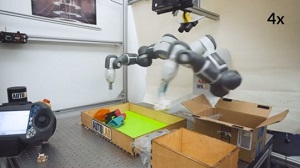
Image: DexNet2.0. Credit: Adriel Olmos, CITRIS Media
Waste brine to fresh water: a new recovery method
A new way to extract almost 100 per cent of the water from highly concentrated salt solutions has been developed by Engineers at the University of California. The research incorporates carbon nanotube-based heating element that majorly improves fresh water extraction. The new method will aid water shortages in dry regions, as well as helping to reduce concerns surrounding high salinity brine disposal (such as hydraulic fracturing waste).
New translating device speaks 8 languages
A new device, called One2One, could be a replacement for the need of translators!
One2One, powered by IBM’s supercomputer ‘Watson’, takes approximately 3-5 seconds to translate a conversation and play it back. The handy device can pick up eight languages - including English, Japanese, French, Italian, Spanish, Brazilian, Portuguese, German and Chinese. To work properly, the two people having the conversation must be wearing the device. One2One does not need WiFi or phone connectivity to operate, meaning that it can even work in remote areas without draining your phone’s battery.
See below for a video on how it works.
Fast and furious electronics
In the world of fast-paced technology, there is always a push to create smaller and faster electronic units with longer battery life. Scientists from the universities of California and Massachusetts have created a ‘heterostructure’: a 25-atom thick TI (topological insulators) film that adheres to an insulating magnetic film. Devices containing TI are favoured by engineers because it makes the device strong enough to combat errors and defects, so that faulty applications do not end up crashing the entire system.
Works cited
University of California - Berkeley. "Meet the most nimble-fingered robot ever built." 1 June 2017. ScienceDaily. www.sciencedaily.com/releases/2017/06/170601192717.htm
University of California - Riverside. "Squeezing every drop of fresh water from waste brine: Research expands efforts to provide clean water for the world's growing population." May 29 2017. ScienceDaily. www.sciencedaily.com/releases/2017/05/170529133659.htm
University of California - Riverside. "Accelerating the quest for quicker, longer-lasting electronics: Research makes topological insulators magnetic well above room temperatures." 23 Jnue 2017. ScienceDaily. www.sciencedaily.com/releases/2017/06/170623155508.htm
Umer sohail. New Earpiece Translates Foreign Languages As You Have A Conversation”. 26 June 2017. Wonderful Engineering. http://wonderfulengineering.com/new-earpiece-translates-foreign-languages-as-you-have-a-conversation/
IBM has come a long way since they introduced their first personal computer in 1981. The advent of the device transformed the world. In the 36 years since then engineers have continued to innovate with computer technology, some might say that the effect computers have had on society is beyond measure.
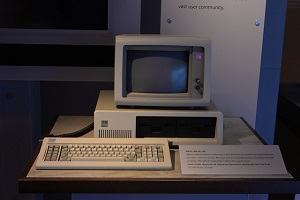
Photo credit: THE Holy Hand Grenade! via Foter.com / CC BY-ND
The history of computers reaches to a period long before 1981, but IBM’s maiden voyage into unfamiliar territory undoubtedly changed the game, and influenced countless numbers of engineers. It was, after all, the International Business Machine.
Now personal computers are everywhere; in our pockets, in our televisions, and even in our watches. And, unfortunately for the technophobic, almost everything in our world is becoming a computer, thanks to the Internet of Things.
The World Economic Forum is closely monitoring the development of computers, tracking their role in creating a better world. As we know computers have had an immense impact on the industrial, commercial and domestic environments in the 21st century; this has encouraged the World Economic Forum to put them on their agenda. They plan to influence the changes that revolutionize the technologies involved and to measure the effect of the internet. Justine Cassell, the Associate Vice-Provost for Technology Strategy and Impact at Carnegie Mellon University, wrote a report for the WEF,
“In the same way we have a tendency to think of computers as rectangular boxes, we have a tendency to think of the internet as being some kind of ether that floats around us. But quite recently researchers have made enormous breakthroughs in creating a way for all objects to communicate; so your phone might communicate to your refrigerator, which might communicate to the light bulb. In fact, in a near future, the light bulb will itself become a computer, projecting information instead of light.”
Designing the future
IBM is continuing the trend of engineering the future with computational technologies (software and hardware), enabling engineers to work more efficiently and build a more interconnected, smarter future. They do this with what they call ‘Continuous Engineering’. They write:
“IBM IoT Continuous Engineering helps teams keep on top of the complexity of developing smart, connected products. Running in the cloud, it helps systems engineers and software developers to deliver against requirements, respond efficiently to change and create high-quality designs faster-- while controlling development costs and meeting compliance needs.”

In truth, many tech companies are tirelessly working at equipping computers with the ability to interconnect almost everything; from our clothes, to our cars, to our houses. They’re trying to make machines more intelligent, so they can do the repetitive tasks that humans find frivolous. In essence they want computers to think for us.
The first evidence of this is perhaps no better exemplified than in the recent boom of in-home artificial intelligence assistants. These devices use hardware and software and an internet connection which is connected to an artificial intelligence. This intelligence learns your preferences, understands what you need when you need it, and can talk to you as well.
Artificial intelligence
IBM has their very own ‘Watson’, Amazon has ‘Alexa’ and Google has their ‘Home’ device. The future of computers seems to involve engineers attempting to build seemingly omniscient machines. But are they getting it right?
Jeff Hawkins, founder of Palm Computing Inc, the company behind the Palm Pilot, has moved on to neuroscience technology. His new company, Numenta, utilizes the current technology within the neuroscience and engineering industry, in the hopes that it will enable computers to mimic the human mind. He writes:
“The solution is finally coming within reach. It will emerge from the intersection of two major pursuits: the reverse engineering of the brain and the burgeoning field of artificial intelligence. Over the next 20 years, these two pursuits will combine to usher in a new epoch of intelligent machines.”
Numenta discovered that for machines to think like humans, they need what is called sensorimotor integration. To see and ‘feel’ the world in the same way humans do. Hawkins calls it the “principle of combining movement with changing sensations”. Hawkins believes computers need to mimic the absorption of information which is traditionally the responsibility of a human neocortex. Unless they are programmed with this capability the ‘intelligent machine’ will remain elusive,
“Intelligent systems need to learn multidimensional models of the world. Sensorimotor integration doesn’t occur in a few places in the brain; it is a core principle of brain function, part of the intelligence algorithm. Intelligent machines also must work this way.”
The video below from IEEE sums it up:
Hawkins’ aim is to reverse engineer the neocortex and understand it from back to front so that he can somehow transfer that understanding into a computer. He says he does not think that those working in machine learning and artificial intelligence are aiming high enough. He concludes:
“While it is exciting for today’s computers to classify images and recognize spoken queries, we are not close to building truly intelligent machines. I believe it is vitally important that we do so.”
Works Cited
IBM IoT Continuous Engineering. 27 June 2017. Web. 27 June 2017.
Hawkins, Jeff. "What Intelligent Machines Need to Learn From the Neocortex." IEEE Spectrum: Technology, Engineering, and Science News. IEEE Spectrum, 02 June 2017. Web. 28 June 2017.
Written by Justine Cassell, Associate Vice-Provost for Technology Strategy and Impact, Carnegie Mellon University. "By 2030, This Is What Computers Will Be Able to Do." World Economic Forum. Web. 27 June 2017.
Is it okay to fail? Engineering failure can be and has been a good thing; it is after all how we learn and how engineering designs improve. But it can be catastrophic; the tragic failure of a bridge, for example. There is another sort of failure in engineering: companies which have released products to the masses without adequate take-up have experienced market failure.
 Failure for these companies usually means sending product engineers back to the drawing board; it is often very difficult to gauge whether or not there is a demand for a product. Nurturing skills in business and entrepreneurship, however, will hold engineers in good stead by giving them the edge when it comes to assessing the market and its demand for engineering merchandise.
Failure for these companies usually means sending product engineers back to the drawing board; it is often very difficult to gauge whether or not there is a demand for a product. Nurturing skills in business and entrepreneurship, however, will hold engineers in good stead by giving them the edge when it comes to assessing the market and its demand for engineering merchandise.
To show that companies are prone to designing, engineering, and manufacturing products that fail a Swedish town has opened a new museum. It is completely devoted to displaying the failed products that the world has seen throughout the ages. A clinical psychologist named Samuel West was behind the idea and his motivation for opening the Museum of Failure Innovation? He reckons that failure is a good thing.
“Even the biggest, most competent companies fail. The trick is to create an organizational culture that accepts failure so that you can fail small...rather than fail big,” West says. West displays some of the most recognizable failures that were seen on a global scale.
 The Nokia N-Gage was poised to be the mobile phone of the future. Half-phone, half-handheld-gaming system, this was the must-have device of the naughties.
The Nokia N-Gage was poised to be the mobile phone of the future. Half-phone, half-handheld-gaming system, this was the must-have device of the naughties.
Initially the demand for it was quite high, but it had some design quirks: one of these entailed holding the phone vertically on its thick edge, whilst putting the thinnest edge to your ear to hear your caller. The buttons were also oddly laid out. It just wasn’t practical.
On top of this the device lacked good gaming titles. Ultimately the phone lost its value to customers.
 Long before the iPod, iPad, and Siri, was Apple’s failed digital assistant Newton. It was a very basic Palm Pilot, built three years before the Personal Digital Assistant was a thing.
Long before the iPod, iPad, and Siri, was Apple’s failed digital assistant Newton. It was a very basic Palm Pilot, built three years before the Personal Digital Assistant was a thing.
Steve Jobs, upon his return to Apple in 1997, allocated engineers positions in the designing and manufacturing of what would go on to be the iPod. Jobs, in Walter Isaacson's official biography, lamented:
“My gut was that there was some really good technology but it was [screwed up] by mismanagement. By shutting it down, I freed up some good engineers who could work on new mobile devices. And eventually we got it right when we moved on to iPhones and the iPad.”
But it’s not all doom and gloom with Apple’s Newton. It is a perfect example of how a device, with no real customer interest, set the stage for the rise of an engineering design that changed the world. That design being the eventual iPhone.
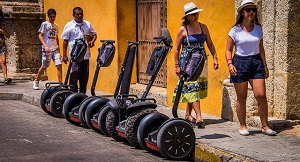 West has even put the two-wheeled engineering marvel, the Segway, into his museum of failure. Segway Inc spent $100 million developing their product. They went on to sell each one at an unrealistically high price of $3,000 for the entry-level version and $7,000 for the premium vehicle.
West has even put the two-wheeled engineering marvel, the Segway, into his museum of failure. Segway Inc spent $100 million developing their product. They went on to sell each one at an unrealistically high price of $3,000 for the entry-level version and $7,000 for the premium vehicle.
According to TIME, the company only sold 30,000 units between 2001 and 2007. The world wasn’t convinced that it was the ‘next big thing’ for getting from A to B.
“The Segway was supposed to revolutionize the way we transport people. And we all know that Segway today is used by tourists before they go get drunk,” West said sardonically.
Google also thought it could revolutionize our worlds and put our smartphone and smartwatches directly on our faces. They released a product named Google Glass - a head-mounted augmented reality wearable computer. The engineering of wearables is now commonplace within engineering disciplines and this will inevitably drive the cost down. But Google, in 2013, seemed to have put the cart before the horse.
 Google Glass was released at an expensive price point of $1,500. The market felt it wasn’t adequately function-filled to justify that, in other words, $1,500 seemed a bit steep for a pair of cool shades. The product never really left beta testing;
Google Glass was released at an expensive price point of $1,500. The market felt it wasn’t adequately function-filled to justify that, in other words, $1,500 seemed a bit steep for a pair of cool shades. The product never really left beta testing;
Nonetheless, the future of head-mounted augmented reality wearables is bright, as shown with the Microsoft Hololens. It is clear therefore, that engineering failures bring about more innovation in the long run. However, for those products that miscarried, they now have a new home, in the Museum of Failures.
The world is now left wondering what fascinating engineering design will rise and fall next. Perhaps the latest craze, the fidget spinner will suffer the same fate, and find itself in West’s historical failures museum?
Works Cited
St., 24/7 Wall. "The 10 Biggest Tech Failures of the Last Decade." Time. Time Inc., 14 May 2009. Web. 26 June 2017.
Weller, Chris. "13 of the Biggest Product Flops Featured in Sweden's New 'Museum of Failure'" Business Insider. Business Insider, 14 June 2017. Web. 26 June 2017.
Tom Davies, is an asset and sewerage manager in Australia. He is working on the implementation of a lower budget online monitoring system for a rural wastewater/sewerage scheme in the Shire of Moora. He studied his Masters of Engineering at the Engineering Institute of Technology.
He chats to us about the older wastewater monitoring systems and how they are being updated with newer, continuously online systems that are not overly expensive and can be implemented in rural areas.
Utilizing online courses, most notably the Master of Engineering through the Engineering Institute of Technology, Davies acquired the appropriate technical skills and academic skills that enabled him to make a contribution to rural Australia.
For over 1.3 billion people in the world, electricity can change everything. In Africa alone, 630 million people do not have electricity. We talk to Tristan Kochoyan, the founder of Power On, a for-profit organization that has set up a power grid in Benin, West Africa - and wants to share the secret to a sustainable power grid with the world. They think capitalism and solar engineering technologies are the answer to getting everyone in the world access to prosperity-building electricity.
 To be cyber secure is becoming increasingly difficult because our interconnected world poses greater risks. The battle continues nonetheless; cybersecurity professionals are emerging in larger numbers and installed cybersecurity software and hardware is now essential across all industries.
To be cyber secure is becoming increasingly difficult because our interconnected world poses greater risks. The battle continues nonetheless; cybersecurity professionals are emerging in larger numbers and installed cybersecurity software and hardware is now essential across all industries.
Minter Ellison, one of Australia’s largest corporate law firms, warns universities of the potential data theft that they face due to underinvestment in cybersecurity. The firm’s research showed that ransomware attacks in Australia rose by 300% from 2015 to 2016.
The law firm’s Paul Kallenbach and Leah Mooney recently carried out their second annual Cyber Security Survey. The survey was created to “assess changes in Australian organisations’ cyber resilience over the past 12 months”, and covered many different industries. The following summarises their findings:
“Minter Ellison found that, while some progress has been made over the last 12 months among the entities surveyed, many Australian organizations have a long way to go to achieve an appropriate level of cyber resilience.”
The firm reported that 42% of the organizations they had surveyed did not have a data breach response plan, and 92% of them don’t “conduct regular staff training on IT security issues”.
The firm says that one industry that really needs to increase their cybersecurity infrastructure is the higher education industry. Universities hold the financial, personal and confidential information of many of their students - information that shouldn’t fall into the hands of cyber attackers. Data breaches could be very damaging to the reputations of universities across the globe. Another area of concern with data breaches within universities from Minter Ellison’s viewpoint is the fact that critical research is performed within the walls of universities. The impact of stolen data could have incredibly damaging effects on those who spend their careers in research and development.
Are blackouts to come?
Moreover, the vulnerabilities of critical infrastructure have been highlighted in the last few years due to some high profile cyber attacks. The most recent being the ransomware attack on the National Health System across Great Britain.
With remote control of key industrial operations increasing, hacking in the form of denial of service attacks could run rampant, and, for example, cause entire city electricity grids to shut down. Cybersecurity experts ESET and Dragos Inc have published warnings with key industries and infrastructure in mind; they report that a malware known as Industroyer or Crash Override could close down their operations.
Talking to Reuters, ESET’s malware researcher Robert Lipovsky, said:
“The malware is really easy to re-purpose and use against other targets. That is definitely alarming. This could cause wide-scale damage to infrastructure systems that are vital. The tactics, techniques and procedures described as part of the Crash Override malware could be modified to target U.S. critical information networks and systems.”
According to experts, the Industroyer malware is a sophisticated beast; experts say the hackers do not need to control it manually; it automatically overrides the systems of critical infrastructure. It is believed to be related to the malware that took down the Ukraine’s power grid in December 2016.
The official word from experts is for engineers to be alert and cognizant of their industrial control systems and ensure that all the steps to prevent a cyber attack are in place.
The fight against cyber attacks will be a long and tedious one. An ever larger numbers of devices are being connected to interconnected networks that can be remotely accessed. These devices and networks are becoming more vulnerable as a result.
With the demand for cybersecurity on the rise education opportunities for networking and IT gurus have risen too. After all it is up to these specialists to match the hackers’ agility in an attempt to keep ahead. Personnel able to design and implement key software and hardware with built-in reinforcements to prevent catastrophic cyber attacks, now and into the future, are essential.
In this spirit, the Engineering Institute of Technology (EIT) has designed an intensive 6-week online course that covers how to secure automation, control and SCADA systems used across industry: http://www.eit.edu.au/cybersecurity-automation-control-and-scada-systems

Works Cited
Finkle, Jim. "Cyber Firms Warn of Malware That Could Cause Power Outages." Reuters. Thomson Reuters, 12 June 2017. Web. 21 June 2017.
Minter Ellison - Paul Kallenbach and Leah Mooney. "Perspectives on Cyber Risk: Implications for Higher Education." Lexology. Web. 21 June 2017.
Dear Colleagues
I was fascinated but not surprised about the impact you can make on reducing crime in your local area – simply by being more entrepreneurial and opening a local retail or manufacturing business. Well - any business where people are employed and clients visit you.
Recent Research
Worldwide, there has been an uptick in mixed use development – combining residential and commercial properties in the same area. This makes it an easier commute and strengthens the local character.
Some interesting recent research showed that when retail establishments in Los Angeles were closed, crime jumped in these areas. Typical crimes that were reduced with people meandering about (i.e. foot traffic) are the usual ones - car and home break-ins.
People do speculate that certain businesses attract crime but this is especially not evident in this study (where medical marijuana dispensaries were shut down – Yes !). Similar patterns were shown for restaurants that were shut down – crime jumped with the absence of people circulating on the streets. Foot traffic provides free and casual surveillance. Naturally enough, you would say that the additional foot traffic in a neighbourhood actually provides additional thieves but this is not borne out with this research.
One key factor common to retail establishments, whether marijuana dispensaries or restaurants, is that they generate foot traffic. And with foot traffic comes informal surveillance. The researchers calculated that a retail business such as your local restaurant or supermarket typically cuts out a huge $US30,000 pa in local burglaries and theft.
So having additional ‘eyes on the street’ (as Jane Jacobs remarked in her book The Death and Life of Great American Cities) makes a huge difference to crime.

Build and They Will Come
So build your next engineering business close to a residential area. You will be doing a huge favour to local home owners in terms of reducing crime and helping your community cut down on policing (and indeed in hospital) costs. And, of course, in providing jobs.
Thanks to Professors Tom Y.Chang and Mireille Jacobson for reporting on their research in the Harvard Business Review entitled: Research: When a Retail Store Closes, Crime Increases Around It.
Rudy Giuliani makes a good point: It's about time law enforcement got as organized as organized crime.
Yours in engineering learning
Steve
Mackay’s Musings – 27th June’17 #658
125, 273 readers – www.idc-online.com/blogs/
In-ear EEG devices have become increasingly more popular in the later stages of the last decade. Carel Wessels, the top student of Electronic Engineering at the University of Pretoria for 2016, has now taken on a new challenge. He is designing and developing an in-ear EEG device that will revolutionize industries such as the truck driving industry and the infant care industry.
What follows is an in-depth conversation about how electronic engineering and biomedical engineering meet, and what those disciplines of engineering can achieve together.

Getting hired at prominent engineering companies is a tough feat. You need the right set of skills and qualifications, together with relevant experience (in most cases) and convince them that you are indeed the right candidate for the job (often in a sea of applicants). Students graduating into the modern day workplace need slick, impressive curriculum vitae in order to catch recruiters’ attentions.
The disturbing part of this is the fact that the recruiter in many companies today is automated. This automated system, otherwise known as the Applicant Tracking System, does the initial culling of applicants, so presents new and unique challenges to those determined to find employment in the industry.
The Applicant Tracking System (ATS)
According to HireRight, 144 people apply for each entry-level position, and 89 people apply for each professional-level position within a medium-sized company. Those kinds of figures cause companies to look to automated software to sift through those applications.
They also report that more than 95% of organizations use ATSs, including almost all Fortune 500 companies. Even Google is establishing their own job classifieds service that will have its own beta applicant tracking system.
Brian Delle Donne, President of Talent Tech Labs - a higher education research firm - recently spoke to Forbes about the Applicant Tracking Systems. He said:
“Applicant Tracking Systems arose as a system of compliance or record keeping for companies. Companies used them to keep track of who was applying to their jobs, as well as to manage scheduling and interviewing and candidate contact management. I say compliance because companies need to demonstrate they are equal opportunity employers, so Applicant Tracking Systems are used to keep tabs on applicants in terms of gender and race and demonstrate that no discrimination is occurring. So Applicant Tracking Systems quickly became the system of record for hiring. Early systems also had rudimentary capabilities around matching keywords in the job description to keywords in the resume.”
The filtering software is used to minimize the time spent combing through thousands of applicants in the present day; the review of applicants has become an automated process. Sadly, some applicants are in danger of being filtered out, if their curriculum vitae do not meet the keyword requirements of the software. Whether it is the system or the CV that is at fault – with this system (as with the old) there will always be occasions when both the company and the individual will miss out; the moment when an ideal applicant ‘falls through the cracks’.
On the other hand, as with many new technologies and inventions, the law of unexpected consequences has raised its ugly head: Delle Donne says that students now go out of their way to pack their CVs with keywords so that the software notices their applications. There is no regard to whether those keywords actually truthfully represent them.
Experts have cautioned graduates to word their CVs with the appropriate keywords relevant to the job they are applying for.
Employers, too, have the responsibility to ensure their filters are not too stringent on applicants. Despite this there is the chance that good applicants are disregarded for their poor ability to write up an appropriate curriculum vitae.
Steve Mackay, the Dean of the Engineering Institute of Technology, has also weighed in on what a graduate’s curriculum vitae should look like for the modern workplace:
“First of all, focus on the job. Most people think they can use a generic resume because they apply for lots of jobs, that is a sure fire path to destruction. Make it simple; use simple english, laid out simply. Grammar and spelling must be one hundred percent accurate. Avoid excessive information; the twenty page CV has long since gone. Make sure there is lots of white space; it is very useful to put an executive summary at the top of the resume. Try to be specific. Your CV must have business strengths and business wins. And focus your search for the job you really want.”
Works Cited
Craig, Ryan. "The Importance Of Applicant Tracking Systems: An Interview With Talent Tech Labs." Forbes. Forbes Magazine, 28 Apr. 2017. Web. 22 May 2017.
EngInstTech. "ENN15 Constructing Your next Curriculum Vitae (résumé)." YouTube. YouTube, 21 Apr. 2016. Web. 22 May 2017.
"Meet the Robots Reading Your Résumé [Infographic] - HireRight Blog." Go to HireRight. Web. 22 May 2017.
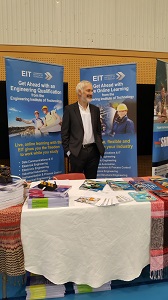
Our Dean, Steve Mackay, attended this day long event on Wednesday 31st May. He met senior students from a number of schools in the south west corner of Western Australia – his first foray into the high school sector.
The Engineering Institute of Technology (EIT) is proudly presenting four sturdy, industry-driven BSc degrees in engineering to students around the world, using our interactive, live online method of learning. With these qualifications and our first campus ready in East Perth it was time to meet would-be technologists and engineers in their final months of school and with their eyes on their futures and tertiary education.
Steve was delighted to meet these young people; some students are clear about pursuing careers in engineering, but for others the path ahead remains a little murky. The flexibility of our learning platform was plainly heartening for those students unwilling to study away from home. And the fact that EIT has a more personal approach to education appealed to others.
Steve at the EIT stand. (With the very popular interactive robotic arm on the left.)
“Going to university coincides with a period of immense change and personal development. We know that one in four young people are going to have an issue with their mental health. I just felt it was important to break the stigma attached to things like anxiety and depression.”
Those are the words of James Connolly, a student at the Australian National University. He was the president of the Students Association. He delivered a speech to students in March encouraging them to increase their awareness of mental health issues. According to The Australian, he admitted to the audience of 2,000 students that he suffered from depression and anxiety.

There are many reasons for why depression and anxiety are rife in universities. There is the weight on the pocket of the student paying fees and also the pressure of finding accommodation close to the university. Then there is getting to class on time and studying for that class test and exam. Being an upstanding student is a factor too; all are taxing on a student’s mental health.
The workload in a particular stream of study may be more onerous than in others; it is often the case for engineering students around the world. In an academic environment that demands the students’ undivided attention some mental health fallout can result.
“Australia and the rest of the world are finally starting to realize that ‘mental health means mental wealth’. Seventy-five per cent of mental ill health emerges before the age of 25 and if it doesn’t kill, it disables or reduces the human and economic potential of generations of young people. The personal, social and economical costs to human society are enormous - estimated to erode $16 trillion from the world economy in the next 20 years; double the impact of cancer.”
Those are the words of Benjamin Veness, one of Australia’s emerging leaders in health and public policy, writing on behalf of the William Churchill Trust. He compiled a report entitled: The Wicked Problem of University Student Mental Health. He has made contributions to the University of Sydney, highlighting the real threat of degrading mental health issues in universities.
International & Online
The Higher Education Statistics Agency (Hesa) in the United Kingdom has also published some worrying statistics. They reported that 1,180 students, who had mental health issues, left university in the 2014/15 academic year in the United Kingdom. This was a 210% increase on the 2009/10 figures when only 380 students dropped out of university due to mental health issues.

As more data is produced, and statistics calculated, institutions will no doubt find that steps will need to be taken to ensure students’ are able to ‘stay the course’.
It will be interesting to note how the changes in learning approaches and methodologies impact the mental resilience in students. Tertiary education and training continues to move towards the use of virtual platforms; in the future a vast number of students will be shunning lectures in brick-and-mortar institutions.
Bonny Barr of Creighton University believes that if campus-based students are anything to go by, support for online students is essential. She has published her opinions in the Online Journal of Distance Learning Administration said:
“Providing online student services is an important component of these distance programs and is often required by accredited bodies. Health and wellness services for online students are especially essential, as college students are accessing mental health services at increasing rates on college campuses.”
Barr writes that faculty of online institutions should look for any unusual behaviors from students who report to online lecturers, and of course, poor academic performance may be an indicator of emotional stress as well.
The Engineering Institute of Technology (EIT) is an example of a college which has adopted an online learning platform. To ensure students remain engaged; to counter any sense of isolation or indeed the sense that they are mere numbers in an institution, EIT uses a live, interactive approach to Online Learning. Their lecturers are streamed to students in real time and these teachers are available to discuss the content. They also employ dedicated Learning Support Officers to guide and encourage students through their courses and degrees.
Works Cited
Barr, Bonny. "Identifying and Addressing the Mental Health Needs of Online Students in Higher Education." Online Journal of Distance Learning Administration. State University of West Georgia. 1601 Maple Street, Honors House, Carrollton, GA 30118. Tel: 678-839-5489; Fax: 678-839-0636; E-mail:
"Home | Winston Churchill Memorial Trust." Home | Winston Churchill Memorial Trust. Web. 24 May 2017.
Telecommunication technologies have grown in leaps and bounds in the last few years. Gone are the days of outdated wired technologies that supply us with our link to the internet, it’s all about the wireless connection in the modern day telecommunications industry.
It was just the other day that 4G LTE technology was being introduced, but now there is a new entrant in the game, due to the large number of devices that are making their way to the cloud.

Credit: Inform.tmforum.org
The research group Gartner, estimates that the world will see 20.8 billion connected devices by 2020. Investment into the Internet of Things is growing at a steady rate. The current level of the telecommunications industry is unable to facilitate that many connections worldwide.
A whole new spectrum is necessary to house the billions of connected devices the world is about to see. That is where 5G comes in. 5G will be interconnecting the myriad devices in the advancing fourth industrial revolution.
Engineers are looking to improve signal quality with 5G, amongst other things. Companies in the United States and China, however, are all trying to outdo each other and be the first to bring the elusive technologies into cities.
The 5G Race
T-Mobile is racing to be the first carrier to provide 5G in the United States, placing a sizeable $8 billion bid in to buy spectrum from the Federal Communications Commission (5G). They hope to have the 5G network fully operational by 2020.
China’s spending on 5G infrastructure will amount to $180 billion, making it the biggest investment into telecommunications technology in the world. According to the South China Morning Post, the country will spend 50% more, with the current estimate, than they did with 4G LTE technologies.
The Chinese mainland is expected to have 588.3 million users by 2020. That will be just less than half of the nation’s mobile users in 2020.
It is reported that the major Chinese internet companies, such as Baidu, Alibaba Group and Tencent Holdings, are all leading the way to a future 5G internet connection that would grapple with 8K video streaming, as well as augmented and virtual reality technologies.
It will also pave the way for an efficiently run smart city that generates data and analytics about key infrastructure such as water and electricity metering.
Korea and Japan are reportedly also encouraging their engineers to get 5G networks up and running for the 2018 Winter Olympics and the 2020 Summer Olympics. However, for now, the pronouncements of would could be outweigh the showcasing of technologies.
The Need for Standardization
The public relations’ hype, from the various companies wanting to throw their hats in the ring, has distracted the public from the actual work that has to be done by the telecommunication engineers. The current standard set for 2020, for 5G technologies, by the International Telecommunication Union (ITU) is IMT-2020. The hope is that all countries might work towards one common goal with 5G, with standards that can be globally adhered to.
ITU’s reports detail some of the most important focuses of 5G technology in the near future. The report, Selected Applications/Use Cases by Industry for ITU-R International Mobile Telecommunications (IMT) – 3G, 4G & 5G, reveals some of the more immediate uses for 5G once the technology has been sufficiently developed. The two main focuses are:

- Intelligent Transport Systems: Automated Driving, Collision Avoidance, Railways or High Speed Train Communication, Public Transportation, Location-Based Services, and Logistics in Transportation.
- Utilities - smart electricity grids, water management, gas metering.
5G has the ability to transform the world we live in today, however, the engineering community needs to congregate and innovate under the umbrella of the standards that are being produced by ITU and 3GPP. The complexities of implementing a 5G network will soon make themselves known as the continued development of the 5G spectrums and technologies progress.
Works Cited
"China to Build World's Largest 5G Mobile Network for US$180 Billion." South China Morning Post. 12 June 2017. Web. 13 June 2017.
Santo, Brian. "Struggling towards 5G." EDN. Web. 13 June 2017.
An engineering company, with an agenda to be part of our daily lives, is setting the bar higher and higher as the need for clean energy technologies sees global demand.
Rising CO2 levels has been the key motivator for Elon Musk, the CEO of Tesla, who has made it his life's mission to make sustainable, renewable energy technologies that would inflict less harm on the planet.
With that dream in mind, Tesla and its subsidiaries have been hard at work at building the prototypical clean energy ecosystem for individuals in society. In layman’s terms, Tesla is actively working towards a fully, sustainably powered house. A defining feature of a house is, of course, the roof. Thus, Musk announced the Tesla Solar Roof earlier this year.

"The goal is to have solar roofs that look better than a normal roof that generate electricity, last longer, have better insulation, and actually have an installed cost that is less than a normal roof plus the cost of electricity. Why would you buy anything else?" Musk said.
The energy captured by the Solar Roof will be stored in Tesla’s Powerwall 2.0. The PowerWall is a high density lithium-ion battery that will capture and store the energy that has been captured by the solar panels on the roof. The stored energy can be used to minimize the amount of utility-provided grid-energy for a house. The Powerwall powers lights, sockets, the refrigerator, and bedrooms of an average 4 bedroom house. Musk says that with the Solar Roof installed it would enable a house to be powered indefinitely, even during peak hours. The company is also releasing the Powerpack 2 that will integrate with international power grids.
peak hours. The company is also releasing the Powerpack 2 that will integrate with international power grids.
Musk has asserted that the energy ecosystem they are working on is not fool-proof; in other words the grid will be needed as a back-up.
"The solution is both local power generation and utility power generation. It's not one or the other. Sometimes the Solar Roof is positioned as a competitor to utilities, but, we're actually going to need utility power to increase, and we're going to need local power generation," Musk said.
Steve Mackay, the Dean of Engineering at the Engineering Institute of Technology, looks further into the future, however, arguing that traditional utilities will get into serious trouble with advancing power technologies.
"When you have a decreasing need for power from the utilities - because you are producing your own power at your home – utility revenue will inevitably drop." Mackay goes further, he explains that government controlled power utilities will "jack-up" the prices which will then in turn cause power consumption to "drop-off" even further. "This is causing major challenges for power utilities around the world and is often referred to as the 'power utility spiral of death'."
To top it all off, Tesla has a vision that one day, along with our solar powered houses; we will be driving their fully autonomous, fully electric vehicles. Tesla Motors’ Model 3 is entering production in 2017. The first prototypes are being spotted on roads in the United States now in the month of June.
The cars are powered via similar lithium-ion battery technology like the company’s Powerwalls are. Hence, the Powerwalls are able to charge the vehicle up.

Steve Mackay. Engineering Career.org. 12 June 2017.

Harnessing the wind to the benefit of mankind has been the concern of the more technically minded for centuries. From the sailboat, to the windmill, humans have been making use of this abundant source of energy, and inventing unique ways of capturing its benefits for power generation.
But how did we get to the point where engineers are today in terms of the very recognizable wind turbines you see today?
Dear Colleagues
We all know that habits can be powerful in achieving great things (e.g. timekeeping or exercising/studying regularly) or descending into the depths (smoking, drinking or eating too much).When we think of habits, I guess we mainly think of the latter ones. And once you have a bad habit, it is verily a devil to break out of.
Some really great suggestions for good habits are listed below in helping to write great code but they actually apply to any part of working on an engineering project.
The reason why I mention these habits now is that I have been undertaking a Python programming course to undertake some probably ambitious engineering software projects.
They can be broken down into three areas….
- Team work
- Writing of code
- Commissioning and Maintenance
Teamwork
- Finish the Project as Planned
Stick to your original plan and finish the project on time and to the right level of quality. It is easy to slip or abandon your part of a coding project. Doing your part means that the team is supported in the overall project schedule of deliverables. It is always particularly easy to abandon a software project and move onto other things when the going gets tough.
- Ensure your Project is workable
Often engineers go along with an obviously unworkable project plan. Raise your objections early on to the team and manager when mapping out the project. Leaving this to later, means a lot more pain and frustration.
- Work with the Team; not in Solitary Desolation
Working as a team and communicating vigorously with each other is critical to the success of the project. Lurching off on your own is a recipe for poor outcomes in the project or perhaps even a disaster.
- Blaming Every Other punter but yourself
Be honest about your mistakes and take ownership of your work. Come up with solutions to problems rather than listing them and then sitting back expecting someone else to fix ‘em.
- Share your knowledge and experiences freely
Be totally transparent and free with everything you learn and know. This makes you one of respected members of the team who has a fearsome reputation for openness and generosity.
- Don’t Reinvent the Wheel
Don’t be afraid to use other solutions or approaches created by others. Trying to do everything your way costs more and takes longer especially when you consider debugging time. Keep your work and coding to the standards used in the team. Don’t create your own no matter how much you enjoy creating new templates and styles.
Writing of Code
- Fix It Later
Often you simply don’t have the time to do an immediate fix; but you need a solid system to record what the problem is and what is required. So that it isn’t forgotten.
- One Liners Don’t work – Readable Code is the Key
Often programmers delight in writing tight code which compresses say, 20 lines into one line. But of course it is then totally unreadable to anyone following on later. Someone has to maintain your code or work on it later and you need to think of others coming along later who have to maintain your work. Optimising for the sake of optimising is also a waste of time unless there are real benefits.
- Don’t hide Problems
It is best to confront problems when they occur and to deal with them in the best way possible. Ranging from changing a PLC rack because you have undersized the number of I/O or remedying defective code now rather than later when it will cost much more.
- Ensure Documentation and Naming Conventions are Top Class
Too many engineering professionals shy away from good documentation of a program and of naming variables and function names so that they are logical and help with understanding the program. Document and focus on good naming practices.
- Thrive on Best Practice
There are always best practices you can apply in your project. For programming it may be code reviews, test-driven development and good QA practices. They may be more arduous and take longer but they have been designed by veterans who have built them with oodles of experience.
- Apply the Right Tool for the Job
Often we get comfortable with a particular software tool (e.g. the XYZ editor) which may be brilliant for one programming language or project but total inappropriate for another. Learn and accept new ways of doing things even though these changes are often painful.
- Try and Generalise Code
Often I find code with a ferocious amount of hard coded values in them (e.g. for timers and counters). Think of making things configurable so that you make rapid changes with a simple data configuration file tweak rather than rewriting of wide swathes of code.
- Randomly Copying Code
Often you have to copy a chunk of code from another project into your program. Inevitably, after a glance you don’t understand how it works but as you are in a rush you simply copy it across. While this may be a short term fix; you may find it creates long term problems with unexpected results as you didn’t understand it. So best to invest the time in understanding it and ensuring it is 100% appropriate for your program or to make adjustments to it early on.
- Never Trust Anything
My favourite Robert de Niro quotation is: When there is any doubt, there is no doubt. Never trust anything you have put together without testing it thoroughly. You may have written it and think it is unsurpassed in its brilliance but believe me – until you have tested it – never assume it works properly.
- Never fear asking for Help
When work is tough and you are having difficulty understanding something or solving a particularly tough problem – persist and then ask for help. Most people are delighted to be able to help you.
- Remember peripheral but critical issues
Naturally, you are writing code to solve a particular problem. However, there are other perhaps peripheral issues which you need to think about such as cybersecurity, aesthetics and overall performance which may impact on you later. Think of them as well in writing your code.

Thanks to a great article about writing code which stirred some enthusiasm in my flagging efforts in using Python by Christian Maioli on Codementor.io web site entitled: 35 habits that make you write bad code.
Yours in engineering learning
Steve
Mackay’s Musings – 20th June’17 #657
125, 273 readers – www.idc-online.com/blogs/
 For the civil, and fire protection engineers, including the everyday people of West London, the 14th of June 2017 will be a stark reminder of the dangers of fire. At 1a.m. local time, a 24-storey apartment block caught fire, leading to at least twelve deaths, with 60 injured as a result of the blaze.
For the civil, and fire protection engineers, including the everyday people of West London, the 14th of June 2017 will be a stark reminder of the dangers of fire. At 1a.m. local time, a 24-storey apartment block caught fire, leading to at least twelve deaths, with 60 injured as a result of the blaze.
The London Fire Brigade reportedly dispatched 200 fire-fighters, along with 40 trucks to try and contain the blaze. By daylight, the fire seemed to have been contained.
A concerned civil engineer on Twitter, Hiten B Chohan said:
“#GrenfellTower. This intense fire, still burning. Can blow up RC columns making the whole building unstable. Worried Civil Engineer.”
“We have a structural engineer, who in conjunction with my urban search and rescue advisor is monitoring the stability of the building,” said London Fire Brigade Commissioner Dany Cotton. “This is an unprecedented incident. In my 29 years of being a fire-fighter, I have never ever seen anything on this scale.”
However, according to multiple news sources, the structural engineer, after performing a study of the building, confirmed that the building was not in danger of collapsing.
The Aftermath
The fire chiefs involved in the investigation say it is too early to speculate what may have caused the fire. A property company that might be perplexed about how such a mammoth fire was possible are refurbishment experts Rydon, who had performed a refurbishment of the building in 2016.
In a statement, Rydon said:
“Rydon completed a refurbishment of the building in the summer of 2016 for KTCMO (Kensington and Chelsea Tenant Management Organisation) on behalf of the Council, which met all required building control, fire regulation and health & safety standards. We will cooperate with the relevant authorities and emergency services and fully support their inquiries into the causes of this fire at the appropriate time.”
However, critical of the refurbishment work done by Rydon, was a blog by a group known as the Grenfell Action Group, who highlighted the ongoing issues with the Grenfell Tower in a post, hauntingly named: KCTMO - Playing with fire!
 The post seems to predict that the Grenfell Tower would eventually suffer a catastrophic event due to fire safety, and other health and safety legislation not being followed. An excerpt of the post reads:
The post seems to predict that the Grenfell Tower would eventually suffer a catastrophic event due to fire safety, and other health and safety legislation not being followed. An excerpt of the post reads:
“It is a truly terrifying thought but the Grenfell Action Group firmly believes that only a catastrophic event will expose the ineptitude and incompetence of our landlord, the KCTMO, and bring an end to the dangerous living conditions and neglect of health and safety legislation that they inflict upon their tenants and leaseholders.”
They go on to say:
“It is our conviction that a serious fire in a tower block or similar high density residential property is the most likely reason that those who wield power at the KCTMO will be found out and brought to justice!”
Bad practices
The action group and residents pointed out that there was only one entrance and exit to the Grenfell Tower, asserting that a fire at the entry/exit point would mean that there would be no escape route for residents. In 10 separate blog posts, the group warned that a fire would have incredibly catastrophic consequences on the Grenfell Tower.
The Daily Mail has pointed to the rain-proof cladding being the main factor contributing to the speed at which the fire spread through the building. A similar cladding controversy was highlighted in the United Arab Emirates back in 2016, when skyscrapers in Dubai were burning faster due to bad construction practices and decisions of engineers.
The fire in North Kensington took 30 minutes to engulf almost the entire building. Buildings with similar cladding and fire escape set ups are now being studied to gauge whether or not they could survive similar fates. Residents have told reporters that the fire alarm - that purportedly did go off in the area - was too soft to hear. Two facts seem to have contributed to the deaths: residents weren’t adequately alerted to the fire and then there was the fire’s ferocity.
 The residents of the Grenfell allegedly tried to pressure their landlords into installing sprinkler systems in the building; the request was reportedly shot down by KCTMO.
The residents of the Grenfell allegedly tried to pressure their landlords into installing sprinkler systems in the building; the request was reportedly shot down by KCTMO.
An anonymous fire systems engineer, who writes under the moniker randomfireengineer, on the popular social media site Reddit, writes:
“I install and maintain fire systems in the London area, trust me 1000 engineers woke up this morning like I did [expletive] themselves. I know at least three of the four tower blocks I maintain where the fire systems are just as bad and nothing has been done to fix them. Death traps waiting to happen.”
If this is indeed true, London’s ineffective fire-proofing of buildings will become frightening case studies for fire protection civil engineers. Furthermore, civil engineering standards and practices in England are sure to undergo scrutiny as the investigation into the Grenfell Tower fire proceeds.
Works Cited
Grenfell Tower. Web. 14 June 2017.
Reporter, Martin Robinson Uk Chief. "'Nobody on the Top Three Floors Survived: Six Dead and Dozens Missing as Massive Blaze 'sparked by Faulty Fridge' Engulfs 27-storey Tower Block in Just 15 Minutes: Residents Hurl Themselves from Windows While Others Make Ropes from Sheets." Daily Mail Online. Associated Newspapers, 14 June 2017. Web. 14 June 2017.
Tmg. "Grenfell Tower Blaze in Pictures: Firefighters Tackle Massive Fire at West London Block of Flats." The Telegraph. Telegraph Media Group, 14 June 2017. Web. 14 June 2017.
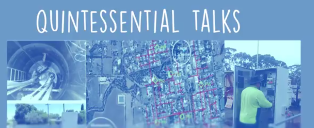 Tom Davies, is an asset and sewerage manager in Australia. He is working on the implementation of a lower budget online monitoring system for a rural wastewater/sewerage scheme in the Shire of Moora. He studied his Masters of Engineering at the Engineering Institute of Technology.
Tom Davies, is an asset and sewerage manager in Australia. He is working on the implementation of a lower budget online monitoring system for a rural wastewater/sewerage scheme in the Shire of Moora. He studied his Masters of Engineering at the Engineering Institute of Technology.
Sending aviation and aerospace engineers’ pulses racing, the widest aircraft ever built has been unveiled in Mojave, California.
 The Stratolaunch aircraft was funded by billionaire Paul G. Allen in 2011. Allen and Burt Rutan founded the company, Scaled Composites, which is behind the build. They are concerned with making access to space ‘more convenient, reliable, and routine’.
The Stratolaunch aircraft was funded by billionaire Paul G. Allen in 2011. Allen and Burt Rutan founded the company, Scaled Composites, which is behind the build. They are concerned with making access to space ‘more convenient, reliable, and routine’.
The plane’s wingspan stretches to 385 feet (117 meters), stretching further than a football field, the world’s biggest airplane. According to Composite Manufacturing Magazine, 300 engineers and fabricators were involved in the design and the manufacturing of the plane.
“Utilizing six Boeing 747 engines for a payload capacity of over 500,000lbs and an operational range of approximately 2,000 nautical miles, Stratolaunch is capable of delivering payloads to multiple orbits and inclinations in a single mission,” Allen said.
The hope is that the plane will be able to go into low earth orbit (LEO) and be useful for firing rockets into space that will launch satellites. Stratolaunch will also be an experiment in “normalizing access to LEO’ for ‘commercial, philanthropic, and governmental’ purposes. Thus, fuel, ground and flight testing will be performed. The first full launch demonstration will commence in 2019.
 The fuselage to the left of the plane is for the aircraft’s crew, whereas the other fuselage is specifically for housing the flight data systems.
The fuselage to the left of the plane is for the aircraft’s crew, whereas the other fuselage is specifically for housing the flight data systems.
The Future
The twin-fuselage future of aircraft is not a new concept, the North American XP-82 Twin Mustang is a famous example of an aircraft with a twin-fuselage that entered production at the end of World War 2, and saw some action in the Korean War. However, they have become more uncommon since then.
In 2011, NASA did, however, predict that a commercialized twin-fuselage aircraft would be available by 2025. Six years ago they had awarded Lockheed Martin, Northrop Grumman and the Boeing Company contracts that allowed them to develop concept designs for the specific purpose of launching new ‘modernized’ aircraft in 2025. NASA tasked the engineering companies with lowering the noise of their aircraft by 85%, and encouraged a larger focus on minimizing nitrogen oxide emissions and increased reduction of greenhouse gases.
Credit: NASA
In 2014, NASA tested their Towed Glider Air-Launch Concept that, much like the Stratolaunch, is to be used as a rocket/satellite firing aircraft. However, what makes Stratolaunch different is the use of 747 engines that will propel the aircraft, whereas NASA’s initial concepts required a tow-plan to launch its twin-fuselage aircraft into the sky.
Works Cited
Conner, Monroe. "Towed Glider Air-Launch Concept." NASA. NASA, 01 July 2015. Web. 08 June 2017.
Milberg, Evan. "Scaled Composites Completes Test of Stratolaunch, the World's Largest Composite Aircraft." Composites Manufacturing Magazine. 01 June 2017. Web. 07 June 2017.
This month's May Roundup has some interesting finds...be sure to scroll down for a read.
A printable, flexible and rechargeable battery
Nano-engineers at the University of California (San Diego), have developed zinc batteries flexible and stretchable by using hyper-elastic polymer layers made from isoprene and polystyrene. In this way, the batteries can stretch twice their size without damage. The batteries were also able to be made rechargeable by adding bismuth oxide to the ink, along with zinc silver oxide.
To find out more, see the video below.
Invisibility could be possible...
 New technology could be achieving what was once thought to be impossible: invisibility. Researchers from North Carolina State University have tuned the refractive index of a semiconductor using electric fields, resulting in a change of light behaviour passing through it.
New technology could be achieving what was once thought to be impossible: invisibility. Researchers from North Carolina State University have tuned the refractive index of a semiconductor using electric fields, resulting in a change of light behaviour passing through it.
This breakthrough opens up a world of possibilities, including being able to watch a virtual reality without goggles, the creation of an invisibility cloak and watching a movie that floats in front of your eyes.
Click here to read more.
Image credit: imeche.org
Soggy pizza crusts a thing of the past: Apple engineers a special box
While Apple has surprised us in the past with its technological advancements, we never would’ve guessed the company would expand its repertoire to solve our food-related problems.
The pizza box, pictured below, means that we no longer have to endure the pain of soggy take-out.

Image source: Wonderfulengineering.com
Patented by Apple in 2010, this circular pizza box contains steam holes in the right places to allow steam to escape, along with carefully placed ridges to elevate certain parts of the pizza. The box is also designed to be storage savvy.
However, bad news: these boxes, currently being trialled by Apple employees, have not been publicly released…
Is your home hack-proof?
The devices in your home – such as light switches, doorbells and fridges – can be controlled remotely and connected through Wi-Fi. This sets up a network in which data is collected and shared, making it a possible target for hackers. How protected are your home devices?
Click here for a BBC video, where cyber-security expert Ken Munro discusses ways in which you can protect your home from hack attacks.
Works Cited
Katwala, Amit.25 May 2017. “Scientists create world’s first printable, flexible and rechargeable battery”. Imeche.org. http://www.imeche.org/news/news-article/scientists-create-world's-first-printable-flexible-and-rechargeable-battery
Arif, Aayesha. “Apple Patented a Pizza Box That Will Keep The Crusts Crispy”. 19 May 2017. Wonderfulengineering.com. http://wonderfulengineering.com/apple-patented-pizza-box-will-keep-crusts-crispy/
Dear Colleagues
I notice with faint amusement that Intel announced last week (rather too confidently) that ‘Self-driving cars will add $7 trillion a year to global economy by 2050’. As one less-than-impressed punter remarked: This was presumably said to boost Intel shares.
What is the impact on us as engineering professionals?
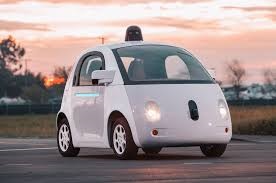
Here we go again – ‘Massive Business Opportunities’
The move to the driverless future reminds me of a comment made by another colleague commenting on the confident prediction of the paperless office in the eighties (because at this time everything was being computerised from paper-based systems). He rightly noted that we are as close to the paperless office as we are to the paperless toilet.
And surely enough at this time – with the advent of computerisation - there was a huge surge (no decline whatsoever) in paper consumption because of easy access to computer-connected printers (and presumably other reasons such as the massive increase in regulations requiring records of everything to be kept – so called ‘paperwork’).
It is only some 30 years later with huge changes in technology (e.g. smartphones and tablets) that I believe there has been a huge drop off in office paper consumption. I believe the same will be true of the self-driving car. Many predictions of imminent changes but these may be off by a few decades. As the remarkable investor Howard Buffet remarked: Timing is always the hardest thing to get right when investing for the future.
The ‘Passenger’ Economy
The concept which Intel has been promoting is that huge new businesses will rapidly form because of car drivers soon having ferocious amounts of time available now that they are not controlling a steering wheel any longer. An estimate of the additional time available to people is 250m hours per year.
Typical activities for people sitting in driverless cars would include watching movies and playing games. Unusual suggestions for new businesses include mobile beauty salons and health clinics. People will no doubt increasingly abandon owning a car and will summon them when required. One can already see this in many cities where you only pay for a car when you use it.
Other suggestions are that driverless cars would go to consumers to provide a portable restaurant experience. Naturally, freight and deliveries would now be conducted 24 hours a day/7 days a week. Recharging farms would be needed for provisioning electric vehicles with power and parking space.
But the Main Concept is Probably not directly about cars
The key opportunities will be created not directly by driverless cars but by the technologies and businesses that arise from this change in life style. For example, in replacing car sales, maintenance, repairs, crash repairs, insurance, refuelling and space for a garage.
Horrible Deaths May be Lower
The typical statistic that is thrown around is that there are over a million deaths per year worldwide due to car crashes. Autonomous cars should make a huge dent on this huge toll. Something that hasn’t really been considered is the Law of Unexpected Consequences arising from when the death toll is reduced insurance drops dramatically, repair smash repair yards go out of business, funeral parlours experience a significant drop in their business and trauma hospitals and counselling services aren’t as busy etc.
Ultimately, everything is driven by costs and perceived value. You either pay considerably less or think that you are getting considerably more value for your experience. This will thus drive this industry to some dramatic changes.
The shift is cost driven, you either pay a lot less or you get a lot more for the same money. It's also more convenient not to deal with maintenance, refueling, parking .. or owning a garage. And more flexibility as you can ride in different types of vehicles, according to one's needs at a given time.
When will this change occur ?
I suspect there will be the usual concerns and screaming for more regulations because of safety concerns with self-driving cars that drive amok. There will be a huge number of sceptics about this change. But surely within the next decade we will start seeing a growing impact from these autonomous cars in our cities.And perhaps not merely on the road but finally autonomous vehicles in the air as well…….
Seize the Opportunities today
As an engineering professional – it is clear that no matter what industry you are in – these opportunities are worth while grabbing. Pause for a moment and consider what you can do?
Gary Shapiro, president and CEO, CTA remarked (quite humorously, I thought): “If you asked Americans back in the early 1900s their opinions about daily transportation needs, they’d have said they wanted faster horses that ate less food!”
Yours in engineering learning
Steve
Mackay’s Musings – 6th June’17 #655
125, 273 readers – www.idc-online.com/blogs/
Dear Colleagues
Great engineering careers aren’t built around sudden inspiration, profound insight or even incredible technical abilities. I believe they are built around an average person doing ordinary things extraordinarily well coupled with huge persistence and patience.
A good example of an ordina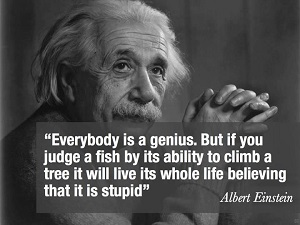 ry person who did well in engineering and in the military is General Dwight Eisenhower (who later became – arguably a good president). He was an average performer in his engineering class at West Point Academy; apparently possessing a fairly average IQ. Although apparently he really enjoyed the typical emphasis of engineering on physics and mathematics. He wasn’t regarded as someone destined for great things. And yet he presided over one of the greatest armadas the world has seen - the D-Day Landings in Normandy, France on the 6th May 1944 to liberate Europe.
ry person who did well in engineering and in the military is General Dwight Eisenhower (who later became – arguably a good president). He was an average performer in his engineering class at West Point Academy; apparently possessing a fairly average IQ. Although apparently he really enjoyed the typical emphasis of engineering on physics and mathematics. He wasn’t regarded as someone destined for great things. And yet he presided over one of the greatest armadas the world has seen - the D-Day Landings in Normandy, France on the 6th May 1944 to liberate Europe.
He did have three really great qualities though.
- He Worked Particularly Hard
He persisted with every task until he had it right. He was dedicated to doing things on time to a high level of quality. He didn’t tolerate poor outcomes but patiently worked to achieve a high quality outcome in everything he did.
- He didn’t sweat the ‘small stuff’ but focussed on what mattered
Many of us work ferociously hard on often trivial tasks which probably aren’t critical to a great outcome. Eisenhower calmly assessed what were the important things and focussed on achieving great outcomes from them.
As you may recall – the D-Day landings in Normandy depended to a huge extent on good weather This was a huge task transporting an enormous volume of material and men across the English Channel in a very short time. Despite the rain pelting down the night before the landings, he trusted his meteorologist to make the right prediction of good weather for the landings and gave the order to ‘Go’. As it turned out – the weather was fine and his assessment here was spot on. There were many other issues that he could have been distracted by; but he looked at the key elements for success. Eisenhower thus focussed on the key leverage points to make for a great outcome.
- He Worked with Good People
Eisenhower never worked with people who were unreliable, ineffective or untrustworthy but always were the best. He trusted these people’s advice and depended on them to do the right thing. He never tolerated poor performers or people who didn’t achieve great outcomes.
Conclusion
The great thing from all of this is that someone fairly average achieved such amazing things in his engineering and military career by focussing on three critical skills. This is certainly inspirational to me and perhaps you.
Erica Jong makes an excellent point: Everyone has talent. What's rare is the courage to follow it to the dark places where it leads.
Thanks for Stephen Ambrose' excellent biography of President Dwight Eisenhower and to the ever thoughtful Dr Philip E. Humbert for his assessment of life skills we need for success.
Yours in engineering learning
Steve
Mackay’s Musings – 30th May’17 #654
125, 273 readers – www.idc-online.com/blogs/
When a pump stops operating, an entire industrial operation can be halted. When they do go down, a level of troubleshooting is necessary before the operation of a pump can be restored. In some cases, an entirely new pump is needed due to the several kinds of erosion that pumps undergo. This hiatus in is always financially challenging.
However, strides are being made to ensure that troubleshooting is as quick and painless as possible. The technology to monitor pumps and their operation is improving thanks to newly engineered technologies and the Industrial Internet of Things.
Oil & Gas
Caterpillar has released an Electronic Monitoring System for oil and gas industries. Their performance monitoring system can assist in minimizing downtime, but also protect the pump from undergoing a catastrophic failure.
“Our well service customers want not only superior performance from their pump products but also the technology to help them incorporate innovative solutions into their operations,” said, Caterpillar Oil & Gas well service manager, Derek Kemp
Cavitation and valve leak detection is something the Pump Electronic Monitoring System (PEMS) is capable of. The ability to monitor these failures means that the pump’s life is extended. If pumps continue to operate without shutdowns whilst cavitation occurs, it can have debilitating effects on the impellers, and the overall health of the pump system.
The result is cavitation erosion, pictured below. Pump cavitation is when bubbles form around a pump’s impeller - the bubbles explode and send shock waves into the pump which cause microcracks that can be fatal to a pump.
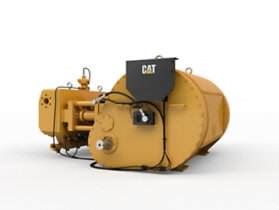
The Internet of Things
The Industrial Internet of Things is also ensuring that industrial companies are able to monitor the health of their pumps through sensors embedded inside the pumps. Another company pioneering the Product Lifecycle Management (PLM) for pumps through the Internet of Things is a company named ThingWorx.
Their virtual representation solution is able to show when air bubbles are forming and causing cavitation.
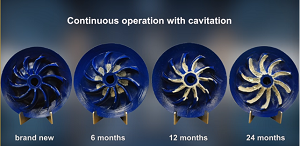
“Using our technology and integration with analytics tools we can take these actual values and we can pump them into a computational fluid dynamics simulation so we can see problems. We can actually use that data to perform not an idealized simulation, but visually represent what’s actually happening in the pump right now,” said Michael Campbell, Executive Vice President of PTC’s ThingWorx IoT platform.
They hope one day to implement augmented reality on physical hardware so that operators can ‘see’ what is ailing a piece of machinery in real time.
When cavitation occurs high strength material is damaged by collapsing bubbles, and as a result microcracks are formed. In the past it was almost always impossible for operators to notice this process in enough time to avert an expensive shutdown of operations - the most likely outcome. With increasingly sophisticated virtual representations of the inner workings of pumps, the job of monitoring has become more effective, allowing operators to more easily pre-empt trouble and damage.
“What we would like to do, where we’re headed, is being able to present this on the pump itself in augmented reality so you can look at it and see what’s happening. You’ve seen a wind tunnel where they introduce smoke so you can see what the airstream is doing? Augmented reality is similar,” Campbell said.
Through immediate data and analytics of the operation of pumps within an industrial operation, those costly shutdowns could be a thing of the past.
Works Cited
"ThingWorx Analytics - Flowserve Pump Demo." YouTube. 01 Aug. 2016. Web. 17 May 2017.
Waters, Louise. "Caterpillar Launches Pump Electronic Monitoring System at OTC." Oil Review Middle East. Web. 17 May 2017.
Dear Colleagues,
If you look at the results of most economists, financiers and journalists you will see that their prognostications are never particularly good at predicting the future. It is nevertheless tempting to make a few suggestions about the future of oil and electric vehicles as solid trends are now emerging. Ultimately everything is driven by price - and oil and electricity is certainly no exception.
As engineering professionals you are certainly going to be impacted by the changeover from oil driven cars to electric over the next few years. How can you prepare yourself to take advantage of these huge opportunities ?
Two Observations are Notable Today
The first one is the collapse in previously strong power utilities from monolithic highly profitable entities to often shadows of what they were before – mainly because of the massive growth in solar energy in homes and other independent producers. This process of the weakening of the power utilities is often referred to as the power utility ‘death spiral’. As more households provide their own power and thus reduce their consumption of electricity from the utility; the utility responds to the overall drop in power consumption by increasing their prices. This in turn, drives homes to increase their solar energy installations further to reduce their reliance on the (often government owned) utility.
The second item is the incredibly swift (Elon Musk of Tesla reckons it is still slow growth) growth of electric or hybrid cars in the Western World. When my young programmer nephew puts a deposit down for an electric car, I know things are changing.
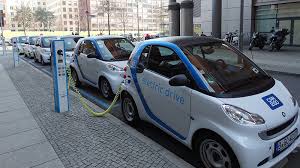
Predictions, predictions…
Fitch (the investor ratings agency) refers to the ‘investor death spiral’ for companies that don’t adjust to the rapid change from oil fuelled cars to electric and the impact it will have on previously solid businesses.
The suggestion is that over half of global oil demand is driven by transport (Bloomberg). I have heard other numbers saying that 25% of global oil demand is for cars. I am not quite sure of the actual numbers here – probably a guestimate somewhere in between.
Oil majors such as BP are now saying that the pick up in electric vehicles will be swift with an estimated 100m electric cars in 2035 (as opposed to an earlier estimate of 57m). Shell says the majority of cars on the road by 2030 will be electric. Amazing numbers from oil companies.
Are these estimates correct ? Who knows ?
But one thing is for sure – even with 5% or 10% of the mix of cars being electric and a big chunk of households using solar – this will have a major impact on the consumption of oil and coal and the way we conduct our lives.
As Engineering Professionals Prepare yourself for Change – they are definitely a’coming
One immediate impact is the huge increase in electric power consumption as opposed to that of oil and coal. Will this save the bacon of the traditional power utilities ? Perhaps.
From an engineering point of view – recharging of cars will place a huge load on the existing grid and local distribution network. For example, it is estimated that even six closely located vehicles charging together at peak times (e.g. a wintry evening in Europe or a ferociously hot day in Australia); could lead to local brown outs.
Surely a few of the great challenges and opportunities for engineering professionals such as yourselves.
Elon Musk makes encouraging noises:I really do encourage other manufacturers to bring electric cars to market. It's a good thing, and they need to bring it to market and keep iterating and improving and make better and better electric cars, and that's what going to result in humanity achieving a sustainable transport future. I wish it was growing faster than it is.
Yours in engineering learning
Steve
Mackay’s Musings – 23rd May’17 #653
125, 273 readers – www.idc-online.com/blogs/
Your engineering qualifications could take you anywhere around the globe. Even to the southernmost continent.
This week we talk to a South African electrical engineer who overwintered in Antarctica. From December 2015 to February 2017, Paddy Riley, a graduate of the University of Cape Town, tells us how he spent 14 months in Antarctica, assisting with the operating electrical equipment at space weather research base, SANAE IV.
The South African National Space Agency sends electrical engineers (and other researchers) to Antarctica every year to ensure that the radars and core engineering equipment is still functioning in the bitterly cold temperatures. Riley talks about what the radars are used for and what overwintering in Antarctica is really like.
What follows is a conversation about the prospect of working in the coldest temperatures known to man and the challenges of working with a small team of people. But what remains clear is that engineering in Antarctica is an exciting, once-in-a-lifetime opportunity, and something that graduating engineers should consider signing up for.
Robots are an integral part of the industrial operation, and as the fourth industrial revolution steamrolls ahead, they are part of the automation of more and more processes than ever before.
The reality is that robots cannot be kept apart from the human worker as in years gone by. In industrial operations it is becoming commonplace to see employees interacting with and utilizing industrial-scale and smaller, collaborative robots.
Collaborative robots are robots specifically designed for repetitive tasks, especially menial tasks such as picking-and-placing. The concern for those employed to do such duties is that they are now replaceable.
And robots are only getting smarter thanks to artificial intelligence.

The growth of automation
In the United States, the National Academies of Sciences, Engineering and Medicine have, at length, studied the effects of information technology and automation in the workplace. They realize that the rise of automation is an unstoppable force that is driving production up and redefining what the world considers ‘work’.
The group summed their research up in their white paper entitled, Information Technology and the U.S. Workforce: Where are we and where do we go from here?
Advances in IT are far from over, and some of the biggest improvements in areas like AI are likely still to come. Improvements are expected in some areas and entirely new capabilities may emerge in others.
These advances in technology will result in the automation of some jobs, the augmentation of workers’ abilities to perform other jobs, and the creation of still others.
The recent increase in income inequality in the United States is due to multiple forces, including advances in IT and its diffusion, globalization, and economic policy.
IT is enabling new work relationships, including a new form of on-demand employment.
As IT continues to complement or substitute for many work tasks, workers will require skills that increasingly emphasize creativity, adaptability, and interpersonal skills over routine information processing and manual tasks.
- Policy makers and researchers would benefit significantly from a better understanding of evolving IT options and their implications for the workforce.
The American Society of Mechanical Engineers, however, maintains that there will always be physical human input. They write:
“Most products still require some sort of human input in their manufacture. Some tasks require physical dexterity and agility but many others require the flexibility and intellectual reasoning which a robot is not yet able to supply.”
The necessity of retaining personnel alongside robots and within automated environments means that there needs to be increased cognizance of employee safety in the work place.
Safety and ethics
In a book by S.R. Fletcher and P. Webb they analyze the revelations from the 2015 International Conference on Robotic Ethics. They reckon that future robot design must factor in the protection of personnel. The writers go further, recommending that the robot operators receive thorough education about the machines so that trust between human and robot can be established. They write:
“The ethical implications of these new expectations have not yet been sufficiently explored and understood. It has also been discussed that, as a result of safety measures, manufacturing workforces are accustomed to a prevailing concept of robots in manufacturing as a hazardous and segregated from their workspace, but due to impending advances in human-robot collaboration workers will need to adapt their beliefs to accept and trust in system safety.”
Some of these steps are indeed being taken, as Engineering.com reported from a collaborative robot expo. They outlined to what extent sensory fail safes have been implemented into collaborative robots. With interconnected sensors, collaborative robots are now able to tell when a human is in its space, and can abort its operations so that operators do not get harmed.
The fourth industrial revolution will have a more subtle and potentially threatening impact on the future of the industrial operation. It will be responsible for the monitoring of both machine and worker - accumulating a great deal of data. This will include the performance indicators from both robots and humans. The results will clearly reveal which of these is working more efficiently and which is more disposable - from the company’s perspective and in terms of productivity.
Fletcher and Webb ask a very pertinent question about the interconnected, Industrial Internet of Things-esque - the performance monitoring that companies are beginning to engage in. They ask: “To what extent will data on individual performance be gathered and appraised?”
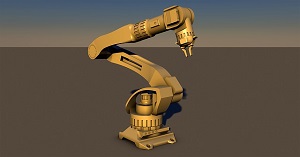
Companies, therefore, have a plethora of new ethical considerations that will form part of their company’s business human resources structure. Not only companies, this will also extend to governments. The European Union is on the forefront of developing standards for industrial robotics.
Safety standards for collaborative industrial robots exist and are constantly being updated. The current standard is named ISO 10218, which covers: “Safety of Industrial Robots” Part 1: “Robots” and Part 2: “Robot systems and integration.” In the coming months and years, more robotics standards will be embedded into law to ensure that the right steps are taken for collaborative robots and humans to work safely and in harmony.
Contentiously, one does wonder if the future will require this particular set of standards?
Works Cited
"The American Society of Mechanical Engineers." ASME.org. Web. 15 May 2017.
ENGINEERING.com. VIDEO: Collaborative Robot Safety with Immediate Contact Stop Features ENGINEERING.com. Web. 15 May 2017.
Isabel, Aldinhas Ferreira Maria, Joao Silva Sequeira, Mohammad Osman. Tokhi, Endre E. Kadar, and Gurvinder Singh. Virk. A World with Robots: International Conference on Robot Ethics: ICRE 2015. Cham: Springer International, 2017. Print.
National Academies of Sciences, Engineering, and Medicine; Division on Engineering and Physical Sciences The National Academies Press. 16 Mar. 2017. Web. 15 May 2017.
If companies want to capitalize on the future of clean energy, they’re going to have to get at least one foot in the door when it comes to storing that energy. A company who has a little more than a foot in the door is Tesla. It has been in their interest to invest in lithium-ion battery technology because the Tesla business relies on it: electric vehicles and solar storage for homes and businesses. They have made strides in growing their batteries’ lifetimes thanks to a seasoned battery researcher named Jeff Dahn.
Dahn has been working for Tesla for over a year now and has professed that the batteries tested in Tesla’s labs have achieved double the lifetime of Tesla’s previous cells. He signed on with Tesla in June 2015, for a five-year tenure, during which time he is working with researchers on making Tesla’s lithium-ion technology the envy of the industry.
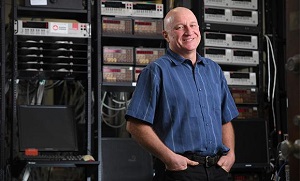
Credit: Dalhousie University
The progress they have made is thanks to the discovery of a variation of an aluminium coating on the cells that “outperformed” other materials. Dahn is now traveling to prestigious universities, one being the Massachusetts Institute of Technology, to showcase the new cells to students. The cells, according to Electrek, “showed barely any degradation under high numbers of cycles at moderate temperature and only little degradation even in difficult conditions.”
At MIT, Dahn recapped the events pertaining to the project of developing energy-dense batteries for Tesla and how they had made their most recent discovery. He said:
“In the description of the project that we sent to NSERC (Natural Sciences and Engineering Research Council) to get matching funds from the government for the project, I wrote down the goal of doubling the lifetime of cells used in the Tesla products at the same upper cutoff voltage. We exceeded that in round one. OK? So that was the goal of the project and it has already been exceeded. We are not going to stop - obviously - we have another four years to go. We are going to go as far as we can.”
The Manganese Nickel Cobalt batteries that Dahn is specializing in are specifically for Tesla’s home-based Powerwalls and the utility-scale Powerpacks that are available to businesses. He says that there is no reason why the batteries cannot last for 20 years.
Naturally, Dahn is being tight-lipped on the progress they are making and is not giving too much away in terms of the chemistry behind their discoveries.
However, more will be made clear as Dahn and his team of researchers continue to grow the energy density of Tesla’s cells.
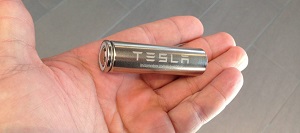
Credit: Electrek
Dahn has said that he is in the business of building more efficient batteries because the planet needs an alternative to fossil fuels. In an interview with his university’s website he said:
“We can’t just keep burning fossil fuels; we’re going to heat the planet into death. And if you want to continue to have land that is not submerged, you have to do something about it.”
Works Cited
Lambert, Fred, and John Fitzgerald Weaver. "Fred Lambert." Electrek. 10 May 2017. Web. 11 May 2017.
McNutt, Ryan. "Supercharged Success: Battery Researcher Jeff Dahn Wins Herzberg Gold Medal." Dalhousie News. 07 Feb. 2017. Web. 11 May 2017.
Elon Musk owns many companies that are on the cutting edge of engineering and business endeavor. Most recently he has been working on Mars missions and relaunching used rockets with his company SpaceX. He also designs, manufactures and sells electric cars and solar storage options through Tesla. But now he is boring. He has even named it the Boring Company.
His new company has begun digging a tunnel below SpaceX’s parking lot in Los Angeles. The boring machine, that has arrived and has been put to work, is reportedly working at a speed slower than a snail - literally. Musk intends to create a system of tunnels to transport traffic, to eliminate the nuisance all cities are starting to experience due to population growth: congestion. In a new TED Talk Interview held on the 30th of April 2017, Musk was asked why he was boring. He said:
“We’re trying to dig a hole under L.A. This is to create the beginning of what will hopefully be a 3D network of tunnels, to alleviate congestion. Right now, one of the most soul-destroying things is traffic, it affects people in every part of the world, it takes away so much of your life and it’s horrible.”
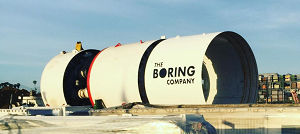
The Boring Company’s boring machine
Source: Electrek
Cars will be lowered underground on what Musk calls a ‘car skate’ and they will then ‘skate’ 124 miles per hour to their destination, under the ground. The Boring Company has released an animated video that gives a better idea of how the system might work within the cities of the future:
Musk said:
“You have to be able to integrate the entrance and exits of the tunnel seamlessly into the fabric of the city. By having an elevator - sort of a car skate that’s on an elevator - you can integrate the entrances and exits to the tunnel network just by using two parking spaces.”
Futurologists vs Futurologists
Musk discounts the rumors put about by the critics who say that drilling underground will be hellishly disruptive to normal life above ground. He says that earth absorbs vibrations very expertly the deeper you go. And they plan on going deep. Some writers and futurologists, on the other hand, are theorizing about the future of flying technology - integrating flying cars into the city in an effort to minimize congestion. Musk, however, is persistently boring.
He said:
“There’s no real limit to how many levels of tunnel you can have, you can go much further down than you can go up. The deepest mines are much deeper than the tallest buildings are tall. So, you can alleviate any arbitrary level of urban congestion with a 3D tunnel network.”
Musk explains why he is against a future where flying cars ease congestion: the wind force, the noise generated by flying traffic and the chance that car parts might rain from the sky, would elevate human anxiety levels. And it is this anxiety he is hoping to alleviate.
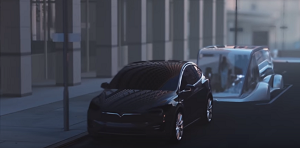
Works Cited
"Elon Musk's TED 2017 Full Interview." YouTube. YouTube, 30 Apr. 2017. Web. 05 May 2017.
Lambert, Fred, and Fred Lambert @FredericLambert Fred Is the Editor in Chief and Main Writer at Electrek. "Elon Musk’s Giant Tunnel Boring Machine Arrived at SpaceX – First Pictures." Electrek. 28 Apr. 2017. Web. 04 May 2017.
“It is focused relentlessly on the national interest and assuring that temporary migration visas are not a passport for foreigners to take up jobs that could and should be filled by Australians. Australian jobs for Australian’s first - that’s the focus.” - Malcolm Turnbull

In an unexpected move, Malcolm Turnbull, the Prime Minister of Australia, has announced changes in the immigration policies of Australia. The amendment to the law stipulates that temporary visas will be outlawed for skilled overseas workers. In the past, overseas workers were able to go to Australia for up to four years. With the new, stricter system, a temporary work visa could be limited to two years.
Engineering managers, engineering technologists and environmental engineers, however, continue to be eligible to apply for four-year residencies in Australia. Whereas 200 job categories were made ineligible for a temporary work visa in the future plan. Malcolm Turnbull says:
“The 457 visa will be replaced by a new temporary visa, specifically designed to recruit the best and the brightest in the national interest. The new visa will better target genuine skill shortages, including in regional Australia. It will include new requirements, including previous work experience, better English language proficiency and labour market testing.”
The backlash against the cancellation of 457 visas is growing, however, particularly as its removal will make it difficult for migrants to become permanent citizens. Writing for The Lowy Institute’s The Interpreter, Henry Sherrell highlights how important immigration has been for Australia in the past:
“As a small, open economy, we rely on immigration more than any other major developed country in the world; over 28% of the population is born overseas. Removing the ability for many migrants to become permanent residents after spending a period of time in Australia will make it harder for employers and organizations like universities to attract global talent.”
The concern is that Australia will be less attractive to competent international higher education recruits. The category ‘university lecturer/research fellow’ was added to the Short-term Skilled Occupation List, which only allows for a two-year temporary visa. Professor Peter Høj, Vice-Chancellor and President of the Group of Eight - the group of Australia’s top research universities - spoke to the Guardian, saying:
“At face value the new technical arrangements for the temporary skills shortage visas and employer sponsored permanent skilled visas may make maintaining Australia’s international advantage more difficult. More broadly, the mere suggestion of the government clamping down on academic mobility into Australia could deter potential academic recruits to Australia.”
Turnbull’s about-turn on immigration is unsurprising when juxtaposed with President Trump’s ‘Hire American Buy American’ executive order and the UK’s Brexit negotiations. They reflect a deep dissatisfaction in these electorates as a result of higher unemployment rates. There will be collateral damage: higher education institutions, for example, will be impacted if top-tier researchers, professors and even students are dissuaded from taking up international positions.
Works Cited
"457 Visas: All Australia Had to Do Was Hold the Line." Lowy Institute. Web. 28 Apr. 2017.
Doherty, Ben. "Universities Fear 457 Visa Changes Will Harm Ability to Attract Academic Talent." The Guardian. Guardian News and Media, 19 Apr. 2017. Web. 28 Apr. 2017.
In our modern world engineers are tasked with finding and designing solutions to the key challenges that population growth poses. Building vital infrastructure, which does not harm the planet, for an ever-growing global population is one of the most important challenges engineers face today.
There is one thorny problem to overcome before sustainable solutions can be found:
Our linear economy is impeding the sustainability of engineering invention and manufacturing. Hence, an economic concept, relatively new to the world, has been introduced that is already impacting and changing engineering. It is called the circular economy.

The Institution of Engineering Technology reports that by 2030, there will be 3 billion more middle class consumers. And by 2050, there will be 10 billion more people on the planet.
What does this equate to in infrastructural terms? More waste, and more water consumption. The institution says that waste levels are currently at 3.5 million tonnes a day, and by 2050, humans will be generating 10 million tonnes of waste per day.
David Rakowski, a systems engineer for the PA Consulting Group, is an expert on the topic of the circular economy. He compiled the aforementioned figures and says:
“It doesn’t take a genius to realize that the legacy we’re leaving our children is quite simply unsustainable. But why is that? Well, if you look at our current approach, we take a linear model. We dig something out of the ground, we turn it into something, and then we throw it away. That clearly isn’t going to work in a world of finite resources. So, is there another way? Well, what if, instead of taking something out the ground, making something and disposing of it, we recycled, remanufactured and reused it? It’s not exactly rocket science. But this is the fundamental concept behind the circular economy.”
Starting with waste
Engineers can, through technical intervention, create solutions for a circular economy – an approach which can work across engineering disciplines. The concept of the circular economy, however, has come under some criticism. There may be a willingness to implement the changes, but the vagueness surrounding the concept is creating a barrier. This is much like the fourth industrial revolution; some could get left behind because there is a lack of clarity on how to proceed.
In Delphine Gallaud and Blandine Laperche’s book: Circular Economy, Industrial Ecology and Short Supply Chain, the authors shine some light on how the circular economy impacts engineering. They believe that evidence of circular economy engineering emerges first in cities and neighborhoods.
They report that new industrial models are being built around the circular economy:
“These include reuse, repair, recycling, functional economy, eco-design, industrial ecology, sustainable supply and responsible consumption, in other words a profusion of concepts which demonstrates that the definition of circular economy has not yet stabilized completely.”
The circular economy is defined by how long resources can be kept and used - the hope is that resources can be kept and reused for as long as possible. It is also known as the zero waste economy. However, generating waste is almost unavoidable in industrial situations. But engineers must think how to eliminate waste, or alternatively, use that waste to create something else.
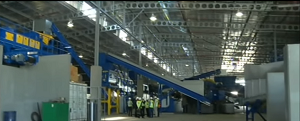
In Cape Town, South Africa, engineers have opened a waste to energy plant. The plant will utilize the household, municipal, and industrial waste the city generates and turn it into a usable fuel (liquid petroleum). The plant cost the city USD$32 million.
The plant will receive 500 tons of organic household, municipal, and industrial waste per day. It is expected to create 80 job opportunities and reduce the number of landfills in Cape Town.
The city is also collaborating with a project known as the Waste Industrial Symbiosis project that will reportedly find a use for the waste of the waste that their processes of turning garbage into liquid petroleum produces. These are the ways the circular economy is beginning to change how engineers utilize plastics and other wastes.
This process of turning engineering into an ecosystem which utilizes everything that flows through it is known as industrial ecology, and is something that engineers must consider in the future of their industrial operations - using waste as a resource. As a result a linear system becomes a closed loop system, and thereby, far more sustainable.
Works Cited
"Circular Economy." World Economic Forum. Web. 08 May 2017.
"Engineering the Circular Economy." YouTube. 29 Oct. 2015. Web. 08 May 2017.
Gallaud, Delphine, and Blandine Laperche. Circular Economy, Industrial Ecology and Short Supply Chain. London: ISTE, 2016. Print.
The United Nations’ State of World Cities report in 2013 estimated that the number of urban residents around the world would grow by 60 million yearly. They also predicted that more than 60% of the world’s population would be living in smart cities by 2050. To accommodate this large influx of human beings, the world’s cities don’t necessarily need to become bigger - they just need to become smar
ter. The opportunities for engineers in the Smart City boom are immeasurable.

A book by Renata Paola Dameri named Smart City Implementation: Creating Economic and Public Value in Innovative Urban Systems defines what the smart city should aspire to in the 21st century:
“A smart city includes all the aspects of the urban life; from tourism to commerce, from industry to agriculture, including logistics, research and education. A smart city program impacts on all the urban infrastructures: public and private buildings, factories and transport facilities. A strong information and communication infrastructure should support knowledge management in the urban context and the sustainability of a smarter city could positively affect water, energy and mobility.”
The book also makes light of the fact that it is impossible for one smart city to resemble another smart city entirely. Depending on the government of the day, municipalities are looking to implement several different technologies in several different ways, based on what they have at their disposals.
Chinese standards for Smart Cities
Chinese telecoms company Huawei believe they can implement technologies to set a standard for smart cities in the future.
Huawei are working with the Indian government to potentially kick-start the Indian smart city initiative. They will target the power utilities first - the company intends to build smart grid solutions for India’s energy sector. They will do this through their Advanced Metering Infrastructure (AMI) solution. Derek Hao, President of Huawei India said:
“In the past, employees had to go to households to collect meter data once a month. Problems including inaccurate metering, ineffective power theft prevention, long charging periods, and inaccurate line loss calculation often causing high O&M (operation and maintenance) utility costs.”
Huawei’s AMI solutions are an agile system that can monitor electricity usage and generate data for power utilities. Huawei uses a product they have developed known as the Hi-PLC. Smart metering of more than 10 million terminals can purportedly be done through this system. “It can greatly help a power utility company reduce electricity loss and increase meter reading efficiently,” Hao said.
The company had generated a handsome USD 75 billion as of 2016. They confirmed this year that they would be offering similar assistance to over 100 smart cities in over 40 countries.
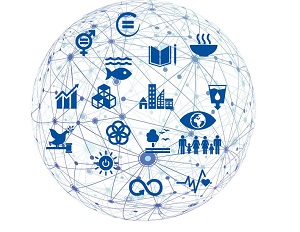
More work to be done
Sanjay Samra, a Professor of Mechanical Engineering at MIT, spoke to ZDNet saying that in their current state, cities are still falling short of the ‘smart city’ moniker. He said:
“Cities today are rather dumb. A significant portion of traffic is just drivers ‘cruising’ while they look for parking, street lights are often on when they are not needed, water systems lose upwards of 50% of the total supply to leaks and the electric grid is incapable of truly responding to new technologies such as electric vehicles and solar panels. Smart parking meters, connected street lights, instrumented water supplies, and smart grids will reduce traffic, save energy, save water, and make the grid more friendly to renewables. ”
Current and future engineers will be tasked with building sustainable infrastructure that is digitally enabled, granted the funding to build the infrastructure is there. That is something that PriceWaterHouseCoopers Global Advisory Leader, Miles Everson, spoke about at the Digital Revolution Summit Mobile World Congress 2017.
Works Cited
Brown, Eileen. "Although Smart Cities Rely on IoT, Security Confusion Still Reigns." ZDNet. ZDNet, 25 Apr. 2017. Web. 25 Apr. 2017.
Dameri, Renata Paola. Smart City Implementation: Creating Economic and Public Value in Innovative Urban Systems. Cham: Springer International, 2017. Print.
Www.ETTelecom.com. "Huawei Keen on India's Smart City Project: Official - ET Telecom." ETTelecom.com. 20 Apr. 2017. Web. 25 Apr. 2017.
Dear Colleagues
No matter how small or big one’s business is – we often tend to be obsessed with what our competition is doing. Naturally, this is all about staying in business and based around the thinking that if you ignore your competition; they may steal opportunities away from you and then who knows what could happen.
Competition could be a simple as another electrician providing similar installation services to you or perhaps, a fast growing engineering design consultancy with similar services to what your firm offers to thousands of clients throughout the world.
However, a point made by the strategist, Tara-Nicolle Nelson, is that this focus on one’s competitors is too distracting – we should be unerringly focused on solving our customers’ day-to-day challenges and problems. By paying all our attention to our customer, the thinking goes, we will uncover unique solutions to their problems and thus our business will flourish. If we are concerned about what our competition is doing – we could end up becoming clones of them or pursuing issues which they may mistakenly believe are important and their clients couldn’t care less about.
Who is your Competition?
So, in reality, your competition is essentially every challenge your customer is facing in the area in which you operate. Your customer isn’t obsessed with who your competitors are but how they can effectively tackle the problems they are currently facing.
An Example
For example, if you are a control systems integrator providing process control services in the mineral processing area, you will probably keep a weather eye on who else is offering these services and what they are currently doing. However, it would be better to focus on the day-to-day problems your customers are having in this area and working out ways to help them more effectively and affordably. For example, your competitors may be working on launching new control hardware which a particular set of clients isn’t that interested in. These clients may be more worried about some awkward process problems caused by more stringent environmental regulations which they are wrestling with.
Without a Doubt
There is always a basic requirement to understand what one’s competitors are doing and how their products are addressing the market. But avoid becoming a ‘me too’ company.
A few suggestions on applying this to your business strategies:
- Don’t obsess with competition but on what your clients’ problems and challenges are.
- Rethink your product or service into what the clients’ challenges are.
- Visualise your clients as real people primarily with real challenges which require effective solutions.
Ben Cohen, Co-Founder Ben & Jerry's remarked: "There is a spiritual aspect to our lives -- when we give, we receive -- when a business does something good for somebody, that somebody feels good about them!"
Thanks to Tara-Nicolle Nelson for an interesting article entitled: Obsess Over Your Customers, Not Your Rivals in the Harvard Business Review.

Yours in engineering learning
Steve
Mackay’s Musings – 16th May’17 #652
125, 273 readers – www.idc-online.com/blogs/stevemackay
Dr Steve Mackay and Ms Edwina Ross met with Engineers Australia on the morning of the 28th March. Emmanuelle Wintergerst, their National Manager for Skills Assessment, outlined the process for those wishing to work and reside in Australia. It is summarised here: To have your qualifications assessed by Engineers Australia, the following options are available:
- If you need an assessment to gain eligibility for a Skilled Migrant visa, the following link will guide you through the process: https://www.engineersaustralia.org.au/For-Migrants/Migration-Skills-Assessment/MSA-StepByStep-Guide
- If you wish to become a member of Engineers Australia you will need to have your eligibility assessed (Stage 1 assessment): https://www.engineersaustralia.org.au/Membership/Assessment-Of-Qualifications-And-Competencies
After acquiring our Master of Engineering (Industrial Automation), Engineers Australia will require the following if you would like them to assess you:
- All academic documents
- ID
- CV/resume
- Employment references and associated documents
- Three essays/reports detailing three work projects completed during your career or during your studies.
(The links above contain instructions for writing the essays/reports.) *Note that the process is quite similar for both streams of assessment mentioned above. Furthermore, the standards of competencies to be assessed against are identical. For general information about visas, points-based visas and SkillSelect the website for the Australian Government Department of Immigration and Border Protection (DIBP) will be of assistance.
Dear Colleagues
I believe there are many of you – in common with me - who have accepted a new job or task and then regretted it afterwards. In my case, I recall a particularly well paying engineering job giving me huge opportunities in a growing area of engineering (industrial automation). However, the company was dysfunctional, treated their clients with disrespect, never delivered on promises and my boss was dictatorial and made poor decisions. It put huge pressure on me and after a year of persisting with this, I quit in disgust (mainly because I had made a poor decision in joining them in the first place). Needless to say, this particular company has long since disappeared.
I should have asked myself four questions before I signed on with them. It is important to understand how extrinsic (e.g. money, fame) and intrinsic motivators (e.g. satisfaction – internal drivers) are tweaking your decisions.

These four questions are:
1.What is the real driver for your decision to take on a new job
If it is simply about money but you are going to be working in a ghastly location and doing horrendous work; then clearly assess for how long you can tolerate it. Or set a finite time limit to how long you will take the job. Money only correlates with deep job satisfaction a very small part of the time. Perhaps, you don’t have a choice as you need the money and your creditors are snapping at your heels?
If you are deeply interested in a particular project or job; you are likely to be highly committed and happy in the role. But if the driver is money or another extrinsic motivator; it may not be such a good decision. Be careful thus to disentangle extrinsic with intrinsic motivators.
2.Does the task or job align with your values
Some time ago, I volunteered for a local engineering association in helping them with a conference. It was close to one of my values in volunteering and supporting the local community but it ended up sucking up a huge amount of time as the other volunteers disappeared when the workload ramped up. Plus we had minimal support from the engineering association in putting on what was a hugely successful event. However, it destroyed the little time I had with my young kids and family and was a source of great regret as one of my values is spending quality time with the family.
So weigh up these tasks carefully to ensure you end up doing the right thing by your values.
3.Is there really a choice you can make?
Obviously you need a salary to pay the bills and bring up your family. But do you really need to put in ferocious hours to a particular job over weekends or to travel a huge amount or do you have real choice here? You may find you can reduce your travel and still achieve the same objectives or delegate someone else to go in your place. We often think we don’t have choices when in reality we do.
One aspect of a fulfilled life is having control of this life. Now I know, we could get seriously ill or have something else nasty happen to us – all out of our control. But we have to try and exert control over what we do as far as possible. Otherwise you have a job out of control and a source of great pain.
4.Will you be successful in the role with real outcomes
Perhaps one should put this as the first consideration to make. But are you sure that technically and resource wise you are able to handle the new job and produce a successful outcome? I have undertaken assignments before where I have been very disappointed with my results and have seriously regretting doing the work.
One task I took on and which I found fascinating (designing and setting up a data acquisition system for a large installation) was brilliant but I had no time to undertake the job as I had a full time operational job to run at the same time. Impossible conflict of time.
Conclusion
So my modest suggestion is to consider these issues above before taking the plunge into a new job or project.
Confucius is so right when he observed: Choose a job you love, and you will never have to work a day in your life.
Thanks to Regan Walsh for an interesting article in the Harvard Business Review entitled: Before You Agree to Take on New Work, Ask 3 Questions
Yours in engineering learning
Steve
Mackay’s Musings – 9th May17 #651
125, 273 readers – www.idc-online.com/blogs/stevemackay
Virtual labs
Remote engineering, also referred to as online engineering, is a fairly recent development in engineering and science. Its aim is to facilitate the shared use of equipment, resources, and specialized software such as simulators.
The expansion of the internet as a tool for training and actual work has thrust remote engineering into a position of importance. The world of engineering is after all a connected world; every engineering component is connected to a computer and therefore the internet. PLCs, oscilloscopes and 3D printers are good examples.
This connectivity has allowed engineering departments to reduce their requisite on site laboratory equipment which underpin the theory given to students.
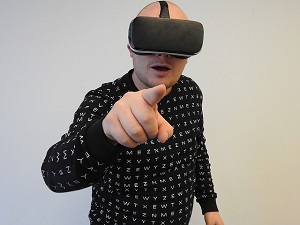
And this is just as well: the range of required engineering tools is growing exponentially, and then changing in pace with technology. Educational facilities are able to scope out what the latest in technology demands, but obtaining it all is often out of their reach or just impractical. Instead, the advance of the Internet of Things and engineering equipment simulation software are transforming the traditional engineering labs and making it all accessible from the cloud.
Online engineering is fast developing the infrastructure for the facilitation of remote access for engineering technologies. These virtual simulations mean that engineering trainees and graduated engineers all across the world have opportunities to access these technologies and up-skill.
With the changing face of higher education, and continued professional development in engineering, the interest in and need of virtual laboratories and remote services is being realized.
Where does it fit into the future of education?
Annually, the International Conference on Remote Engineering and Virtual Instrumentation is held to discuss progress in the industry.
The conference was started in 2004, when virtual instrumentation was largely a foreign concept. However, 13 years later, cyber-physical systems are gradually being added to universities’ and companies’ training and design arsenals. The accessing of simulation software and virtual playgrounds for engineering students is no longer fiction.
Dr Russ Meier, a Milwaukee School of Engineering Distinguished Teaching Professor delivered a keynote in the 2016 edition of the conference. His keynote was entitled: Flipping the Classroom, the Laboratory and Social Media with First Year Engineering Students.
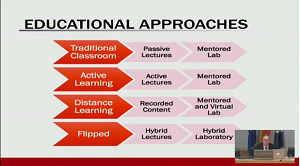
He said that a passive lecture in a large lecture hall is a dying methodology. The complete opposite of passive lectures would be a flipped classroom where hybrid lectures and hybrid laboratories are available to students.
(‘The flipped classroom is a pedagogical model in which the typical lecture and homework elements of a course are reversed. Short video lectures are viewed by students at home before the class session, while in-class time is devoted to exercises, projects, or discussions.’)
Meier also said that, “Virtual laboratories are an integral part of the distance learning experience.”
He asserts that wider development, distribution and application of online engineering technologies are needed. Meier believes that remote interaction between members of the educational community (teacher and students) is essential in this model.
Not only does the development of these tools have an effect on how we train prospective engineers, but it also revolutionizes the way engineers do their jobs.

Simulation + design = faster designs
The effectiveness of virtual labs is further strengthened once it involves a mix of virtual and augmented reality technologies.
Microsoft’s Hololens is the first working prototype evidence that engineers, in the very near future, will be able to collaborate on projects with Virtual Engineering Labs.
The implementation of this sort of technology could reupholster the methods universities and companies use to train their staff. Instead of cumbersome, physical labs which quickly date, an investment in on hardware and software packages could fit the needs of the business.
The company now has six virtual labs in Wolfsburg, Berlin, Munich, Barcelona, Shanghai and San Francisco.
The head mounted ‘goggles’ will be utilized to design future models of VWs, according to Frank Ostermann, a computer engineer at Volkswagen Group IT. Speaking to MSPowerUser. He said:
“At Volkswagen, we have been using augmented reality and virtual reality for some time, mainly to obtain a three-dimensional view. We are now taking a major step forward at the Virtual Engineering Lab. We are transforming technology into a tool for Technical Development.”
Ostermann says the technology leads to faster decision making by the engineers. He also says the software will, in future, be used for both testing out fully virtual components and for the testing of a component through virtual representation on top of a physical object.
Works Cited
"Conferencia REV2016 - 13th International Conference on Remote Engineering and Virtual Instrumentatio." Canal.uned.es. Web. 18 Apr. 2017.
"Volkswagen's Virtual Engineering Lab Using Microsoft's HoloLens to Design Their Future Cars." MSPoweruser. 30 Mar. 2017. Web. 18 Apr. 2017.
The Australian Bureau of Statistics (ABS) state that 66% of Australians are university graduates or have completed an apprenticeship.
In Australia, getting a job without a degree in certain industries was once commonplace, however, employers are now requiring that all important piece of paper; the degree. Joshua Krook, a Doctoral Candidate in Law at the University of Adelaide, writing for The Conversation, alludes to the fact that the goalposts are continually being moved when it comes to higher education qualifications. He writes:
“Where a bachelor’s degree was sufficient to get a job in research, now a master’s degree is required. Where a master’s degree was sufficient to get a job in university tutoring, now a PhD is required.”
For the millennial generation, the reality is that they might have to be behind the books for a couple of years more than their parents were.
Are the 66% of Australians who hold some sort of qualification being snapped up by the work force? Are modern day companies interested in them? Or do they need to gain further education before landing the ideal job? It seems not. Many companies are, increasingly, altering their recruiting policies.
Changes in recruitment

Ernst & Young, one of the biggest accounting firms, and one of the biggest graduate recruiters in the United Kingdom, took a bold step in 2015. They decided to drop the degree prerequisite for prospective employees. They said they wanted to hire people regardless of their academic backgrounds. They opened up 1,600 graduate, school leaver and intern positions.
Their thinking was that they could train people from within the company without the need for the four year degrees behind their names. After a two year trial some of their feedback is interesting:
The company received 75% more applications as a result of their recruitment alterations - they received 37,000 applications for the 1,600 graduate, school leaver and intern vacancies. As a result, 18% of their 2016 graduate intake would have previously been unable to work at the company and now they do.
Malcolm Trobe, the deputy general secretary of the Association of School and College Leaders told the Independent:
“Academic qualifications will always be vitally important but companies often want to ensure that the people they employ have strengths and skills they specifically require for their business. We fully support any system which opens up opportunities for people regardless of their background.”
Recruitment strategies have also been adjusted at companies like PriceWaterhouseCoopers, Ogilvy Group, Apple, and Google, according to Krook.
Engineering with no degree?
Dion Chang, a futurologist and South African trend analyst that founded an analysis company named Flux Trends argues that the traditional degree, at least in a South African context, is dead. However, he does concede that some professions still need the age-old approach. He said:
“Obviously there are many professions that still require traditional academic studies, but overall, the skills needed for future jobs and new templates of business point towards multiple and varied short courses (for example, coding or user experience design), internships and on-the-job learning.”
Chang says that with South Africa’s widening skills gap and its unemployment rates, an academic qualification will be valued less. Technical and vocational skills, and the skills from specialized short courses, might be the key to rebuilding the economy and producing effective graduates. Work experience seems to take precedence over a four-year degree in shaky socioeconomic times.
“All industries are experiencing some form of disruption. Digitization continues to collapse the traditional value chain of each industry,” he says. New skills are needed - skills that your run-of-the-mill degrees might not cover. “A degree no longer guarantees you a job,” Chang concludes.
Online, on time

For those industries that do still require academic endeavor, studying towards a degree is becoming simpler, thanks to the internet. Online degrees can offer more specialized modules and topics to prepare and reskill people for the changing world of employment. It is, however, becoming more difficult for on-campus universities to offer these specializations because without large groups of students the cost is just too great.
Online engineering education and training for those in employment is also an option that individuals and their companies are beginning to embrace. They are realizing that qualifications can be acquired through online universities and institutions, but with minimal or no disruption to full time work.
Those short courses that Chang believes are essential for the development of vital, industry-based skills are also available online. Furthermore, the connectivity of the world means that remote labs and simulation software can furnish trainees with most of the practical skills they need.
Laurence Brockliss, an historian and author at Oxford penned the book: The University of Oxford - A History. He warns that Oxford runs the risk of becoming irrelevant if they do not follow the trend of oncoming online education.
“I don’t think it’s a serious threat at the moment, but I could envisage 10 or 15 years down the road of the newer universities developing online undergraduate degrees in a serious and creative way. If that were to happen and if employers - and employers would determine the success or failure of this - were to feel the quality of the education was as good as residential universities were giving, then that kind of initiative would really take off.”
Works Cited
Adams, Richard. "Online Degrees Could Make Universities Redundant, Historian Warns." The Guardian. Guardian News and Media, 17 Apr. 2016. Web. 20 Apr. 2017.
Joshua Krook Doctoral Candidate in Law, University of Adelaide. "Degrees of Separation: Companies Shed Degree Requirements to Promote Merit over Qualifications." The Conversation. 17 Apr. 2017. Web. 20 Apr. 2017.
"The Death of the Degree." News24. 02 Oct. 2016. Web. 20 Apr. 2017.
Pierre Vermoter has 23 years of experience in the mining, maintenance and construction sectors. He currently works for Murray & Roberts in cementation in their mine engineering design office. He is an accomplished mechanical technician with 16 years of ‘hands on’ technical experience. He has also spent some years in technically associated planning, procurement and sales, and then in mechanical and structural design.
Pierre says that the most fascinating development in the industry is the gradual and continuous automation of mining. He believes this mechanization and the introduction of new innovative mining technologies improves the safety and the productivity of the mining industry overall.
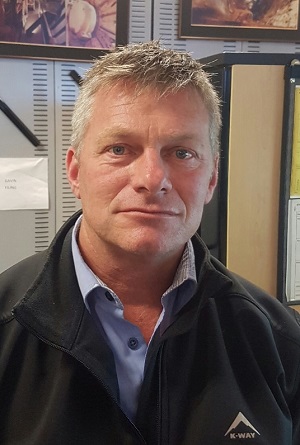
Pierre chalks up his success in the engineering field to having a range of skills and focussing on achieving the required outcomes. He said:
“Career success can be attributed to a result driven, ‘can do attitude’. I have the ability to take ownership of a project and work independently. Specializing in rotating equipment has defined my work style of precision and quality and is driven by attention to procedure and pride in my work. My technical skills are further complimented by an analytical predisposition and a high level of English and computer literacy.”
Pierre recently graduated through the Engineering Institute of Technology (EIT), earning an Advanced Diploma of Mechanical Engineering Technology. The course provides students with a current look at the technologies revolutionizing the Mechanical Engineering industry.
Pierre said EIT’s course gave him “an all-around boost” in terms of his general engineering knowledge; it provided him with a deeper understanding of other engineering disciplines.
“Mechanical Engineering, on a career level, generally finds the practitioner focusing in one particular area and many of the other disciplines get forgotten and left behind because they are not utilized on a daily basis. I’ve now found that a lot of my knowledge has been refreshed and I’ve found I’ve had answers at hand, whereas previously, I had to reference a specialist or do further research. My research has become more focused and better targeted as I have a better grounding now.”
Pierre said that finding out the Engineering Institute of Technology was not only internationally recognized, but locally recognized by the South African Qualifications Authority (SAQA) was the validation he needed to register for the course.
And how does he stay motivated whilst having to work and study? He says he simply doesn’t procrastinate. “It has to be done...so I get it done!”
Welcome back to another month of quirky and exciting occurrences in the Engineering world. From the invention of dissolvable batteries, to cooking dinner in your washing machine, this month's April roundup has got you covered for an interesting read...
Engineering the perfect Easter egg
Have you ever wondered why chocolate melts in your mouth but not your hand? The explanation to this is with precision melting, according to chemical engineer Professor Ray Dagastine (University of Melbourne).
“Cocoa butter is a critical ingredient, it’s what gives chocolate its nice creamy taste,” he says.
“It is also the key to why chocolate melts in your mouth and not in your hands, as cocoa butter is a complex, mostly saturated fat that is a solid at room temperature, but melts at just below the temperature inside the human body.”

Image courtesy of Maxpixel
Your phone’s fingerprint sensor is not fool-proof!
Recent fingerprint technology on smartphones has taken convenience to the next level, with just one touch being able to unlock the device. With the same touch of a finger, you can buy a bag of groceries, a new fridge, or even a new car. However, the fingerprint revolution bears major security holes.
New York University and Michigan State University researchers propose that smartphones can easily be tricked by fake fingerprints that are digitally composed of many common features found in human fingerprints.

Image: Sample fingerprints that the researchers at NYU and Michigan State University compared against the MasterPrints. Solid black lines around a print indicate a match (New York Times).
From computer simulations, scientists developed artificial "MasterPrints" that resemble a close match to prints similar to 65 per cent of phone users.
So, it seems that our fingerprints are not so fool-proof after all.
Dissolvable batteries made out of silk
Biodegradable batteries have been developed to produce enough voltage to power temporary medical implants. These flexible batteries are made of gauzy silk films, and harmlessly dissolve away into the body after a specified number of days.
The image below shows a thin battery made of metal-coated silk electrodes (top left). The bottom right shows a silk-ionic liquid electrolyte completely dissolved in saline buffer solution after 45 days.

Air-powered wheelchair to help every kid enjoy a day at the waterpark
Engineers at the University of Pittsburgh created a powered wheelchair that runs on compressed air. This allows those with limited mobility to safely participate in a day at the water park. Check out the below video to see how it works.
Smart 5G Bandaids able to communicate with doctors
Researchers at the Institute of Life Science (ILS), Swansea University, have developed smart bandages that can detect how a patient’s wound is healing and communicate with the doctor this information over a 5G network. The bandaid can communicate any treatment needed and monitor patient activity levels.

Image courtesy of wonderfulengineering.com
Forget buying an oven – cook dinner in your washing machine...
It's time to forget the kitchen and instead head on down to the laundry for a good feed. Israeli design student Iftach Gazit has designed a new concept that combines cooking and laundry together in the same household machine. The energy-conserving concept allows for your food to be spinning in the washing machine, whilst doing laundry and cooking at the same time. Gazit created steam-bag meals that you can drop in your laundry – whether it is pre-packaged foods, steak, or fresh salmon. These waterproof bags are also an idea for the homeless to be able to utilise free cooking services at the Laundromat.

Image courtesy of wonderfulengineering.com
Works cited
Thomas, Jennifer. “Engineering the Perfect Easter Egg”. 13 April 2017. University of Melbourne. https://pursuit.unimelb.edu.au/articles/engineering-the-perfect-easter-egg
Goel, Vindu.” Your phone’s fingerprint sensor can be fooled”. April 12, 2017. Financial Review. http://www.afr.com/technology/mobiles-and-tablets/your-phones-fingerprint-sensor-can-be-fooled-20170412-gvj8nb#ixzz4e71dGGNj
Patel, Prachi. “Dissolvable batteries made of silk”. April 12, 2017. Chemical and Engineering News. http://cen.acs.org/articles/95/web/2017/04/Dissolvable-batteries-made-silk.html
Liszewski, Andrew. “Every Kid Can Enjoy A Day At The Waterpark With This Air-Powered Wheelchair”. Gizmodo, AU. Apr 13, 2017. https://www.gizmodo.com.au/2017/04/every-kid-can-enjoy-a-day-at-the-waterpark-with-this-air-powered-wheelchair/
Arif, Aayesha. “This Smart Bandage Will Communicate Your Wound Condition To The Doctor Using 5G”. 19 April 2017. Wonderful Engineering. http://wonderfulengineering.com/this-smart-bandage-will-communicate-your-wound-condition-to-the-doctor-using-5g/
Arif, Aayesha. “You Can Now Cook With Your Dinner In A Washing Machine With This New Invention”. 18 April 2017. Wonderful Engineering. http://wonderfulengineering.com/can-now-cook-dinner-washing-machine-new-invention/
14 Myths About Online Education with EIT
The world has become inundated with various myths regarding online learning, mostly due to the infancy of the phenomenon. EIT has become a major proponent in rectifying the detrimental rumours that still plague many undecided prospective engineers.
Below is a collated list of the top online learning rumours debunked:
Online Learning is only for People with Good Computer Skills

False! This myth is a perpetual fear for many students that have studied with us.
All you need to study is a computer, and a working internet connection. While up-to-date technology may certainly benefit your online experience, no real importance is placed on the hardware itself. The concern of technology is also synonymous with computer literacy, as EIT simplifies all the steps necessary to acquire the relevant course content.
Online Learning can Bear the Same Effect as Traditional Classrooms

True! You can receive the same, or even better experience from online learning
This statement may have been true approximately a decade ago, but we've far surpassed any previous inadequacies. EIT's online class sizes are smaller, hence students can experience far more interactivity with lecturers and Learning Support Officers (LSO).
The software utilised, Electromeet, is cutting edge, and designed to accommodate devices of any size and shape.
Online Study is for People who Couldn't become Uni Students

False! Online learning can often be viewed as more effective and convenient than traditional college courses.
Undertaking a university degree is understood to be the standard for many countries now, hence online up-skilling is mistakenly viewed as less prestigious. This concept is ironically not true, as online training with EIT now provides the practical experience that many universities fail to deliver.
Online Credits Will not Transfer to Another College

False! Online credits can transfer depending on the accreditation and course relevancy.
This myth is incredibly dependent, but it does have some legitimate foundations. Many colleges and training centres may not accept unit credits from foreign organisations.
Despite this, the accreditation on the course.
A compilation of effective internet utensils available to all prospective and current engineers
Top Online Engineering Resources
A compilation of effective internet utensils available to all prospective and current engineers
1 – Symbolab
Symbolab is an online formula tool that computes a step-by-step process to finding a solution of a certain mathematical problem. They have won various awards for their efforts with assisting students globally.
2 – MATLAB
Most engineers probably know about MATLAB, but it is a worthy contestant as a top engineering resource. MATLAB allows for:
- Matrix manipulations
- Plotting of functions and data
- Implementation of algorithms
- Creation of user interfaces
- Interfacing with programs written in other languages, including C, C++, C#, Java, Fortran and Python.
3 – DraftSight
Draftsight is a quality freeware AutoCAD software for any prospective engineers. It lets you create, edit, view, and markup any kind of 2D drawing.
4 – ICEWeb
Disregarding the eyesore layout, ICEweb is an established website to provide Instrumentation, Control and Fire and Gas information for engineers globally.
5 – Science Daily
A personal favourite, Science Daily has many fantastic articles, spanning from “Tech” to “Enviro”.
6 – Reddit Engineering
The engineering Subreddits available are some of the best forums to share engineering related content, or ask any questions you may have for other engineers.
Each engineering field also has its respective subreddit, situated on the right hand side of the page.
Proof that adding ‘googly eyes’ to your next engineering design will improve customer satisfaction is here. In Baltimore, Maryland, in the United States, engineers have added eyes to a solar powered, trash-eating water wheel. They have subsequently given it a name as well: Mr Trash Wheel.
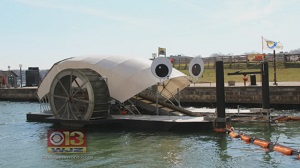
Image Credit: CBS News Baltimore
The creators of Mr Trash Wheel explain how it works on their website: “The river’s current provides power to turn the water wheel, which lifts trash and debris from the water and deposits it into a dumpster barge. When there isn’t enough water current, a solar panel array provides additional power to keep the machine running. When the dumpster is full, it’s towed away by boat, and a new dumpster is put in place. Voila!”
Since the beginning of the water wheel’s operation in 2014, it has collected and cleared 550 tons of trash from Baltimore’s Inner Harbor. It collects 38,000 lbs of garbage a day.
The engineer behind the trash wheel, John Kellet, says that the water wheel could contribute to lowering the amount of plastic that is finding its way into the ocean.
Natural order of things
Using the natural order of things, Mr Trash Wheel uses the natural river currents to funnel trash toward its gaping mouth. This is something that engineers are trying to harness and use to their benefit around the world. An organization leading the charge of cleaning up the plastic in the ocean, with natural ocean currents, is a company named the Ocean Cleanup Project. Read more about them here.
The natural order of things is unfortunately what causes the garbage problem to begin with. Kellet laments that when it rains in Baltimore, the rain water transports litter into the watershed that then feeds the litter into the river - and then into the sea. This is an issue that all coastal regions in the world face today.
Engineers + social media = fun
One of the novel approaches to spreading awareness of their project was first to give the contraption its own name. Fast forward a couple years, and now, it even has its own beer. Mr Trash Wheel’s Lost Python Ale was coined after the engineers found a West African ball python in the trash wheel. The engineers had 15,000 cans brewed. 25% of the proceeds will go to keeping Mr Trash Wheel running.
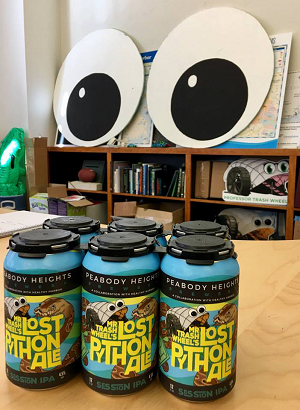
A social media account is also establishing a social presence for the character that is Mr Trash Wheel, and adds to his likeability and his human likeness. Follow him on Twitter for more updates: @MrTrashWheel
Furthermore, getting children excited through the character, teaches environmental responsibility, and it could spur them on to become future engineers who develop technologies that might benefit the planet. Just like Mr Trash Wheel!
Works Cited
"Mr. Trash Wheel Now Has His Own Beer, Proceeds Will Help Clean The Harbor." CBS Baltimore. Web. 23 Apr. 2017.
Dear Colleagues
We are all keen for our teams to be more successful and innovative. This requires your team to be supremely experimental and enthused with constantly trying new approaches – probably showing significant levels of energy in doing this. But as engineering professionals, we are often also anxious about excessive risk and failure and thus try and steer our guys away from this experimental approach. All seemingly a gigantic contradiction.
Obviously, if you are dealing with highly critical safety issues, the last thing on your mind is to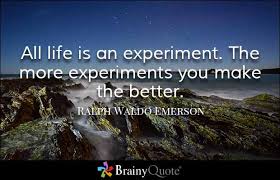 take risks and experiment. However, if you are developing a new product or service or looking to be innovative in your designs or approaches, you have to encourage creativity and experimentation.
take risks and experiment. However, if you are developing a new product or service or looking to be innovative in your designs or approaches, you have to encourage creativity and experimentation.
A few suggestions for encouraging experimentation and innovation with your team include:
Encourage Divergent Thinking. This means suggesting a myriad of solutions to a problem. This is not necessarily directly creative but more focussed on generating heaps of different approaches to the problem at hand. For example, when you normally request one solution – ask your team for ten. As a manager or supervisor stop coming up with solutions but encourage your team to indicate what they would do. Drive them to come up with answers.
Let everyone experiment on their own. When a team member comes up with a potential solution, encourage her to go further and see if it works. Normally, if you pass the solution onto someone else to implement – it terrifies the originator who then becomes too cautious about what they are suggesting.
Make failure a mark of success. Indicate that the more failures there are, the more likely the team is successfully experimenting. Reward multiple attempts at a solution and do not penalise failure.
Thanks to Sara Critchfield at Harvard Business Review for an interesting article on How to Push Your Team to Take Risks and Experiment.
Ralph Waldo Emerson notes: All life is an experiment. The more experiments you make the better.
Yours in engineering learning
Steve
Mackay’s Musings – 25th April’17 #649
125, 273 readers – www.idc-online.com/blogs/stevemackay
Dear Colleagues
You can surely summarise the recent massive technology changes that have happened in four sentences:
- Launch the microprocessor and personal computer
- Connect processors (PCs) together in networks
- Connect networks to each other globally (the internet)
- Add sensors and mobile devices (such as drones/driverless cars)
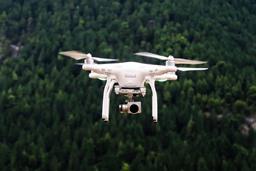
The last change is the interesting one and the connectivity often referred to Internet of Things (IoT)
Drones are the interesting one and enjoying massive growth which you have to take advantage of.
Capture Your Physical World
The great opportunity for drones is digitizing your surroundings in massive detail. Google Maps give some lower resolution equivalent but the use of drones is at a ferociously high resolution. Instead of bring the object to the stage or to the scanner – you can take the ‘scanner’ to the object – whatever it is – a building or city.
Immediate Benefits
As you would know – drones are very useful for building sites, crop mapping, security surellienace, safety – monitoring for sharks, wind turbine monitoring, inspection, real estate marketing. Effectively the IoT in the sky (and indeed underground and underwater). Delivery is being touted by firms assuch pizza delivery and Amazon.
Break the Tethering Cord
At present regulators are twitchy about operating a drone out of line of sight. But the future lies I operating multiple drones out of sight and operating autonomously.
How can you apply drones to your business?
An example given by Chris Anderson in HBR (quoting from McKinsey) is applying them to a construction site (an $8trillon business). He quotes horrible stats that a typical commercial construction project is exposed to:
(80% are over budget and 20 months behind schedule. By digitizing the construction site on a daily basis the software can immediately reconcile the variance between the project plan and reality. And flag warnings.
It’s all about the Software Stupid
While the drone hardware is extraordinarily advanced, it is really about the application software today.
Cloud Robotics perhaps. And this is where you come into the picture. Applying extraordinarily low cost hardware to your application using software. Only you have a handle on the specifics of your work and you can advance this using drones. How can you apply this amazing technology today?
Bill Gates made the remark: Drones overall will be more impactful than I think people recognize, in positive ways to help society.
Thanks to a very easy to read article by Chris Anderson entitled Drones go to work in the Harvard Business Review. Worth reading.
Yours in engineering learning
Steve
Mackay’s Musings – 18th April’17 #648
125, 273 readers – www.idc-online.com/blogs/stevemackay
“It’s a big problem this place. I’ve lost a lot of money. I lost about a million five years ago. So, I stopped for five years. I learned a lesson. Why did they build this place here? To give money away? They’re here to make money. It’s not to give you money. ” - Anonymous.
“All that the capital city needed and more! Pretty awesome.” - Facebook commenter.
These were the mixed reactions to Africa’s second-largest casino. Sun Times Square, a casino that cost USD$289 million to build, opened its doors on the first of April 2017. A monument to capitalism erected in the city of Pretoria, a city that is regenerating and renovating using current civil engineering practices. It promises to be a hotbed of social activity thanks to these endeavours.

In the construction phase of the casino, 10,000 jobs were created, and upon completion, 2,200 permanent jobs will remain. An 8,500 seat arena and a hotel are also being constructed. The casino, however, is open for business.
The casino has 2,000 slot machines with the latest in engineered gaming technology in its arsenal, and there are 100 tables set out for run of the mill card games, roulette, etc.
Our skills for sale – for better or for worse
Natasha Dow Schull, a cultural anthropologist and professor at Massachusetts Institute of Technology (MIT) published a book in 2012 entitled: Addiction by Design: Machine Gambling in Las Vegas. She outlines how modern day slot machines came to be. She writes:
“This process involves up to three hundred people, including script writers, graphic artists, marketers, mathematicians, and mechanical, video, and software engineers -- not to mention designers of auxiliary components like touchscreens, bill validators, and machine cabinets.”
Slot machines are basically just random number generators. In 1993, all slot machines were microprocessor driven. Now, they are linked via interconnected networks that are plugged into a central server, with unprecedented data-gathering technology that also monitors players.
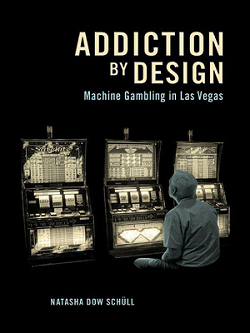
The modern slot machine is carefully engineered against the players. They are warned, but still struggle to resist the lure of possible winnings.
In the 1970s revenue figures for casinos in the United States revealed that 50% or less was garnered from the slots. And now, despite those warnings, gaming machines are responsible for between 70 and 80% of their revenue; they are becoming more popular.
It’s modernized, but is it fair?
In 2010, The American Gaming Association (AGA) issued a white paper named: Demystifying Slot Machines and Their Impact in the United States. The company wrote that slot manufacturers “need to build devices for a society with a decreasing attention span and an increasing demand for exciting, fast-paced entertainment, all in a marketplace overflowing with competing entertainment options.”
Little is said about how they are pitted against the players, but much about how they can be upgraded to reflect the advances in technology of the modern world.
Gone are coins and paper-money slot machines. Gambling machines in modern casinos now work on credit card-like technology, utilizing magnetic stripes with informational data, unique to each gambler, stored on them.
Another shift in design, for ease of use, is the touch screen in place of the lever. And the reels that usually housed the numbers have been replaced by digitally displayed graphics.
The modernization of the gambling machine will only become more powerful as the fourth industrial revolution plods along: the Internet of Things and 5G-connected technologies. It will increase a casino’s ability to monitor its risk, against that of the player.
Schull concluded that it is no longer about risk or volatility with slot machines. It is simply an engineered algorithm which the players believe may just work in their favour and which offers a pleasant diversion and distraction. She said:
“When you look at contemporary slot machines, they don’t operate on volatility. One designer of the mathematics and algorithm of these games said we want an algorithm that makes you feel like you are reclining on a couch.”
Mitch Hedberg, an American stand-up comedian, is recorded as saying, “I like to play blackjack. I'm not addicted to gambling. I'm addicted to sitting in a semi-circle.” The humor is not lost, but the designers of these gaming machines seem to be on a winner with players finding them increasingly tantalizing and irresistible.
Works Cited
Schüll, Natasha Dow. Addiction by Design: Machine Gambling in Las Vegas. Princeton: Princeton UP, 2014. Print.
Thompson, Andrew. "Slot Machines Perfected Addictive Gaming. Now, Tech Wants Their Tricks." The Verge. 06 May 2015. Web. 11 Apr. 2017.
https://www.brainyquote.com/quotes/keywords/gambling.html
The world continues to deliver education and training via age old methods, despite innovation in almost every other sector. The tide is however turning, and it is gathering speed.
Instead of being reinvented it is merely being reshaped by a number of resourceful technologies which allow education to reach a wider audience, ranging from videos through to virtual interactive exercises.
Unfortunately these new technologies are often employed to the detriment of effective learning. The thrill of large student cohorts (and their money) is more often the driver than the delivery of useful education where learning outcomes are indeed achieved.
Some would describe technology in education as revolutionary and so be it; the results of a revolution can be extraordinary, but they most often cause an upheaval, particularly in the short term.
If technology is employed in education to enhance the experience it will succeed and will no doubt contribute to learning overall. The brilliance of a great teacher, fabulous materials and opportunities for student to ‘practice’, should not, however, be underestimated.

So enters blended learning and the synchronous methods of online learning. The first refers to the process of having students in class, but also having them present on virtual platforms, where extended learning occurs. The second refers to students in a virtual classroom in real-time, on a platform which is live and interactive.
The Analytics Boom
Education becomes more personalized with a blended learning system. Not only does it benefit students to perform certain tasks on a virtual platform but it also benefits the administration of education institutions as well.
Individual students can be tracked to see where they are going astray in their courses. After that, corrective measures, informed by accurate data, can be put into place to keep students on the path to graduation. A plethora of data analytics can be generated and perused by Learning Support Officers.
The internet, and the technology that utilizes it, have profound effects on the way education gets delivered in the 21st century - it is already being observed in certain schooling systems.
The School of One in New York understands that some students prefer being led by teachers, and others prefer digital instruction. Thus, the school tries to implement student preferences into several models, to the students’ benefit:
“With School of One, teachers are equipped with real-time data on student performance and students learn only what they are ready for and do not move on to more advanced material until they have mastered particular skills. This enables each student to have an engaging, meaningful, and highly personalized learning experience.”
Education as it should be
The education sector is moving toward a system that has personalized curricula based around the preferences of an individual student. This can be achieved with online sessions/courses offered over and above the core subject matter targeting everyone.
A writer for the Inquirer, Randy David, commenting on The Free Higher Education For All Act that was passed by the American Senate, wrote:
“When people go to university to improve their job prospects rather than to get an education, the whole purpose of higher learning gets distorted. Courses that are not “marketable” lose their appeal.”
Blended learning pioneers are coming to the realization that students may want the choice to build their own curriculum and take subjects and modules that fit their own interests and requirements for a job. They also recognize that they might want to progress at their own pace. This is achievable, to a degree, with blended learning, even more so with synchronous online learning and, although difficult, very much so with asynchronous online education.
Can blended learning continue on-campus?

Blended learning’s success hinges on the fact that students are able to function within a campus-setting attended by the benefits associated with that. They are also given the ability to be trained and educated through an online platform which offers flexibility and a learning platform that suits many students raised during this digital age. Most higher education providers are experimenting with this hybrid system, where traditional face-to-face learning and digital teaching materials coexist.
Brick-and-mortar universities have had to adjust their infrastructure to facilitate the hybrid system, such as campus-wide WiFi hotspots. Some universities are feeling the strain of bandwidth costs.
Sharon Moore, chair of the Association for College and University Technology Advancement (ACUTA) says that students on campuses are increasingly demanding when it comes to bandwidth. Every student needs the internet and every student wants it to be fast, reliable and constant.
“The ‘Internet of Things’ blizzard has descended on U.S. higher-education campuses, bringing with it unprecedented network challenges as student demand for bandwidth reaches new, higher levels every school year,” Moore said.
Their report showed that devices and apps used by students on their servers have become “more bandwidth greedy than ever”. They revealed that bandwidth consumption on college campus had “nearly tripled” since 2012.
And with universities being pressured to let more students in, more bandwidth consumption will be a reality. This will put a strain on the viability of blended learning applications on campus.
Login to the campus instead
The Engineering Institute of Technology (EIT) is therefore taking blended learning even further: students can access the campus and its engineering equipment and software from anywhere in the world.
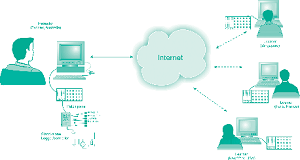
The real world can be manipulated by the virtual world with EIT’s remote labs. The college has real laboratories that can be utilized simply via a web browser. Simulation programs essential to engineering training are also installed on the computers housed in the labs.
The Deputy Dean of Engineering, Steve Steyn, at EIT explains:
“You connect to a remote desktop in Australia. You take over the desktops in Perth. You experiment with software that has been preinstalled on those desktops. You can also control real equipment inside a real lab,”
In a live demonstration, Steyn showed prospective South African students how logging into the remote desktop allowed him to move a mechanical arm from the other side of the globe. A webcam feed of the lab showed how he altered the movements of the equipment.
The college is continually working on making the bandwidth requirements on the individual, when using the remote labs and simulation software, less demanding. Despite these efforts Steyn states that, as it is, the requirements on a student’s data cap are not too data-heavy.
Works Cited
"INQUIRER.net." INQUIRER.net | Philippine News for Filipinos. Web. 24 Mar. 2017.
"Supporting Edtech Innovation with NYC Schools." IZone NYC. Web. 24 Mar. 2017.
Growing BYOD, IoT Trends Fuel Higher-Education ResNet and Bandwidth Explosion
Yahoo! News. 2017. Web 24 Mar.
Tertiary education is under threat in a world where uncertain political climates threaten the graduation and employment prospects of students. However, there is a silver lining in the sector which could in fact lead to more students studying towards a prosperous future. The internet.

The trigger that triggered the universities
The extent to which the political process is interfering with higher education is perhaps not being scrutinised more thoroughly than in the United Kingdom. On the 29th of March 2017, the Prime Minister of the United Kingdom, Theresa May, successfully triggered Article 50; the UK is officially on its way out of the European Union.
The two year long departure from the European Union will have negative consequences for higher education, the students, researchers and lecturers within it, experts say. They believe an isolationist government with isolationist policies may have unexpected outcomes for higher education. According to Universities UK, “Our future relationship with the EU has clear implications for universities in the UK.”
According to the group, being part of the EU had benefits: £1.2 billion in research funding, access to European Research Council grants and access to international research resources. These are very specific examples of what is likely to be forfeited with Brexit.
Overcoming borders and brick-and-mortar
Simultaneously, however, it is a time when opportunities abound. Countries with a robust education sector can potentially extend their offerings to students based in countries where education is less effectual or is too ‘far from home’ to access.
Andreia Inamorato dos Santos a research fellow at the European Commission’s Institute for Prospective Technological Studies (IPTS) delivered a keynote to European university heads at the Open Education Week 2017. She said that higher education was an important part of the political agenda.
She reported that European Union member states had to become technologically literate in higher education institutions. Through this, the EU wants to make education and training more accessible than ever. “It is one of the six new priorities for education and training for 2020,” she told the university heads. The European Commission wants to ensure Open Education becomes a reality.
What is open education?
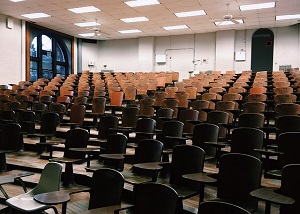
Is it MOOCs (Massive Open Online Courses), is it completely free access?
Dos Santos admits that whenever you ask what open education is, you’re going to get a lot of different answers to the same question.
They define open education with what they call an ‘umbrella term’; all forms of open education fall under it. Their definition is:
A mode of realizing education, often enabled by digital technologies; aiming to widen access and participation to everyone by removing barriers and making learning accessible, abundant, customisable for all. It offers multiple ways of teaching and learning, building and sharing knowledge, as well as a variety of access routes to formal and non-formal education, bridging them.”
Digital technology transforms and modernizes education. For the United Kingdom, it could help overcome some of the barriers that are feared Brexit will build. It does, however, require a shift in attitude and approach.
“A lack of a strategy makes open education a bit more difficult,” dos Santos said.
Instead of isolated practices, universities should help open education up, Dos Santos said. And she maintains that that this requires planning, putting effective strategies into place.
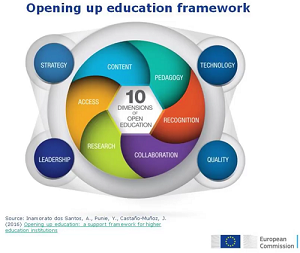
The Commission has set their project in motion, naming it the ‘Opening up education framework’, for already existing universities. The universities are encouraged to build strategies which make learning and training more progressive than ever. This thrust will inevitably include building already established online education and training platforms into on-campus universities. Thereby, allowing students - through the ‘opening’ of education - from around the world, to enjoy the same curricula as students in thriving European nations.
Works Cited
"Article 50: What Do Universities Want from Brexit Talks?" Times Higher Education (THE). 31 Mar. 2017. Web. 03 Apr. 2017.
"Opening Keynote - Andreia Inamorato Dos Santos (IS Unit, European Commission)." YouTube. YouTube, 12 Feb. 2017. Web. 03 Apr. 2017.
Dear Colleagues
Most attempts at change fail - some pundits estimate up to 70% of change attempts fail (Harvard Business Review). Change is particularly hard as it involves people. This is the greatest challenge in effecting change – equipment and hardware changes are relatively easy by comparison. With people there is always inertia to changing from the existing status quo. Especially as they have probably undergone vigorous change initiatives in the past – many of which may not have been particularly successful.
As you know - it is not a question today of whether you can ignore change – in engineering - technology change is ongoing and accelerating. Whether it is your new computer system or a new industrial plant. Everything is different to what it was a few years ago. Much of change is of your firm and your career.
A few suggestions follow on how to most effectively drive change in your firm.
Locate the people who are going to avoid change
This is probably one of the critical elements of any change program. Many people are comfortable with change and willing to embrace it and perhaps even thrive on it.
Those who are unwilling to consider it, need to be identified and their perspectives understood. You may find in talking to these folk that you have to change your strategy for the changes proposed. They may have identified significant problems with your approach. Be open and be willing to modify your approach.
Other issues may be that these folk feel that you are showing them disrespect and are unhappy as a result. They have been with the organisation for a long time or have been senior managers. Simply listening to them and taking their views into account will often neutralise the opposition here. Finally, there are those who feel they are being unduly rushed into a new situation. Again the best strategy is to listen carefully and to try and cushion the new requirements on them by stretching time lines or work requirements to make it easier on them.
There are a few basic rules with managing change:
Communicate Brilliantly about the Overall benefits. To both the organization and the individual. Change shouldn’t be done for the sake of change. Ensure the reasons for the change are well understood and the contribution required from each person in successfully achieving this is communicated. Ensure the overall roadmap is carefully articulated.
It takes time with results slow to arrive. You have to be persistent in managing change and be prepared for the long haul. It doesn’t happen overnight as people don’t change overnight. If you don’t persist, often one person at a time; you will never achieve good results.
It requires person-to-person contact. Change counselling and discussion doesn’t happen over an email or broadcasted over a megaphone. It happens in individual discussions. One person at a time.
Listening is key to progress. You have to listen carefully to people. Particularly those resistant to change. And ensure people know you are attentively listening.
Be Open to Change yourself. You won’t convince people to change if you are singularly resistant to new ideas and better approaches than the specific change you are driving.
Keep Talking and Communicating. You will find that you need to have multiple contacts with individuals spaced days apart to absorb and act on what they say.
Thanks to Sally Blount and Shana Carroll of the Kellog School as well as the Harvard Business Review for an interesting discussion on change.
John F. Kennedy remarked: Change is the law of life. And those who look only to the past or present are certain to miss the future.
Yours in engineering learning
Steve
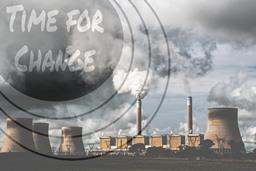
Mackay’s Musings – 11th April’17 #647
125, 273 readers – www.idc-online.com/blogs/stevemackay
After eight years of invaluable service Professor Darrell Fisher attended his final EIT Governance Board meeting on the 28th February 2017.
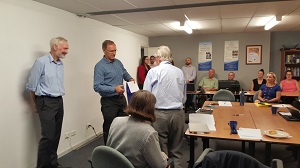
The Board Chairman, Colin Aitken, presenting Professor Darrell Fisher with a farewell gift.
He has built up an enviable reputation in science and engineering education throughout the world and during his long and distinguished academic career. His was the former Deputy Director of Curtin University’s world renowned Science and Mathematics Centre. His major research interests included classroom and school environments and curriculum evaluation, specifically in science. He has published and presented on these topics around the world.
He is a Fellow of the Australian College of Education and the Regional Editor for Asia and Australia for Learning Environments Research: An International Journal. He is a world leader in learning environment research and co-author of the recent book published by World Scientific, Technology-rich Learning Environments: A Future Perspective. Remarkably, Darrell has supervised over a hundred national and international doctoral students through his eminent career.
Darrell presided over a period of strong growth for the Engineering Institute of Technology. The college began with a couple of hundred diploma students and has expanded to our current student body, numbering over 1500, undertaking diplomas through to bachelor and master degrees, in all engineering disciplines.
His uncompromising integrity and passion for science, technology and engineering education has been invaluable to us at EIT. His unswerving commitment to ensure his students achieved their full potential has been the basis for his involvement on our Governance Board and we have truly benefited from this approach. We are deeply grateful to Darrell and will ensure he keeps his promise: to stay in touch and keep an eye on us.
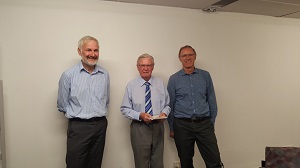
Dean of EIT, Professor Darrell Fisher and Chairman of the EIT’s Governance Board
Blog - Steve Mackay
EIT's Technical Director, Steve Mackay, enjoys keeping his blog up-to-date with useful tips and current industry matters for his fellow colleagues. He has a loyal and expanding following base reaching over 300,000 people around the world.
Student Stories
In this section you have the opportunity to read and listen to EIT students talking about the reality of the programs. Discussions are wide-ranging and include information about the study commitment required, the value of the qualification in their careers, the relevance of the subject matter, future pathways, and more. They provide valuable feedback for you to take into account before you decide to join one of our programs.
Career Information
Latest career information including industry research, podcasts, blogs, life hacks and general information about how you can make the most out of your career.
Education
Here you will find out more about the latest trends and developments within education worldwide, along with some helpful articles regarding study tips and keeping on track with your studies.
Developments
The latest innovation and inventions from the world of engineering can be found here. Learn about advances in technology and how they can make a real difference within your industry.
Announcements
Keep up to date with the latest announcements from the Engineering Institute of Technology. In this section you can read more about new courses, new recognition from professional bodies, our Excellence in Teaching Award, upcoming free webinars and much more.
Monthly Update
We understand that you may not have time to read all the articles that we post, so our monthly update gives you access to some fascinating articles which cover the best of the months news in a compact format.

